CONTENTS
About Our Reporting
This report was developed to share our long-standing commitment, dedication, and achievements regarding sustainability. Based on comprehensive discussions with numerous constituents concerning the most useful disclosures related to sustainability information, we provided metrics using the Global Reporting Initiative (GRI) and the Sustainability Accounting Standards Board’s (SASB) Iron & Steel Producers Standards within this report. GRI provides a framework for organizations to report on the impact and management of economic, social, and environmental matters. SASB provides a framework for organizations to report on industry-specific sustainability topics that are deemed to be material. Our sustainability report was developed to highlight 2021 data for some of the metrics in our 2021 GRI and SASB indices, which are available in totality on our website at steeldynamics.com under Sustainability Reporting. Additionally, we have expanded our reporting to include elements of the Task Force on Climate-related Financial Disclosures (TCFD), and we submitted our response to CDP’s Climate Change questionnaire. This report discloses how we incorporate the opportunities and risks related to transitioning to a lower-carbon economy into our governance, strategy, risk management, and metrics and targets. Our CDP submission is also available on our website at steeldynamics.com under Sustainability Reporting.
OUR COMMITMENT
A Letter from Mark D. Millett

On behalf of everyone at Steel Dynamics, I thank our loyal customers, vendors, communities, and shareholders for their support of our company. My heartfelt thanks to our extraordinary team members for your passion, innovation, and dedication to excellence. We started our decarbonization journey from a leadership position within the steel industry, with a commitment to achieve even more. We are excited to share our progress on this journey thus far.

We have been committed to all aspects of sustainability since our founding. Our commitment is embedded in our founding principles—valuing our people, our partners, our communities, and our environment. These strategic principles drive long-term value creation for us all.
Our Commitment Drives Us Forward
Health, Wellness, and Safety
The health, wellness, and safety of our people and their families is our number one value and primary focus. Nothing surpasses the importance of each individual team member. Safety is an integral part of our culture, and we must collectively ensure every person is personally engaged in sustaining a safe workplace for themselves, their team members, and their families.

Environmental Goals and Progress
In 2021, we announced that we are taking further action to reduce our environmental footprint through our 2025, 2030, and 2050 goals for greenhouse gas (GHG) emissions reduction and increased renewable electrical energy usage. With our electric arc furnace (EAF) steelmaking, North American recycling business, and circular manufacturing model, Steel Dynamics is already a leader in the production of low-carbon steel products within the global industry. With the addition of our stated decarbonization goals, we are raising the bar even further for sustainable steelmaking.
CARBON NEUTRAL BY 2050
› 20% reduction in our steel mills’ Scope 1 and Scope 2 combined GHG emissions intensity by 2025
›
› 50% reduction in our steel mills’ Scope 1 and Scope 2 combined GHG emissions intensity by 2030
› Increase our steel mills’ use of renewable electrical energy to 30% by 2030
Progress
Our steel mills to be Carbon Neutral by 2050
Strategic Growth Initiatives and Innovation
We intentionally position our company for the future through optimization of existing operations, technology development and innovation, and continued sustainable strategic growth through greenfield and transactional opportunities. Some of our more significant recent announcements include:
l An investment to meaningfully reduce our Scope 1 GHG emissions through our partnership with Aymium, a leading producer of renewable biocarbon products. We plan to build our first biocarbon production facility to provide a renewable alternative to anthracite used in our steelmaking operations, which could result in as much as a 35% reduction in our steel mills’ Scope 1 GHG emissions. The facility is planned to begin operating in early 2024. This investment represents a significant step forward on our path to carbon neutrality at our steel mills and our continued commitment to reduce our impact on the environment.
l Plans to construct and operate a lower-carbon emitting, recycled aluminum flat rolled mill, with two supporting satellite recycled aluminum slab centers. Our existing flat roll steel customers are also significant processors of aluminum flat rolled products, seeking a highquality sustainable supply alternative. We plan to produce lower-carbon aluminum flat rolled products, with high scrap content, and make our planned aluminum operations a complementary extension of our metals recycling platform which provides a ready supply of recycled raw materials. We are already the largest North American recycler of nonferrous metals, including aluminum. We plan to begin operations in the first half 2025.
Looking Ahead
We have already made meaningful progress to meet these decarbonization goals. From 2018 to 2021, we have reduced our steel mill Scope 1 and 2 GHG emissions intensity by 15%, and we have increased our use of renewable electrical energy to 11% within our steel mill operations, already achieving our 2025 renewable energy goal.
Our entrepreneurial, innovative, performance-based culture supports our decarbonization efforts through the continuation of EAF steelmaking technology development, the continuation of new technologies in our metals recycling operations, the identification of lower-carbon raw material alternatives, and increased operating efficiency initiatives. As a leader in decarbonization of steelmaking today, there is even more to come.
American steel production is among the cleanest in the world, and the industry is vital to a healthy manufacturing base and sustainable infrastructure. Steel is essential to connect our energy grid and utilities, and to build roads, bridges, automobiles, heavy equipment, hospitals, schools, and businesses. To achieve a lower carbon economy, consumers must buy EAF steel and other manufactured goods that are made in America. We produce steel exclusively utilizing EAF technology, which uses recycled ferrous scrap as the primary raw material. We are the largest North American recycler of ferrous and nonferrous scrap. This method of steelmaking has a much lower environmental impact when compared to traditional steelmaking technology. Our steel mill GHG emissions are already among the lowest in the industry. We produce the steel required for a sustainable future. In this report, you will learn more about our intentionally sustainable strategy, circular operating model, and our commitment to all aspects of sustainability.
Sincerely,
Mark D. Millett Co-Founder, Chairman, President, and Chief Executive OfficerIntentionally Sustainable
Steel Dynamics is one of the largest and most diversified domestic steel producers and metals recyclers in the United States, combined with a meaningful downstream steel fabrication platform.
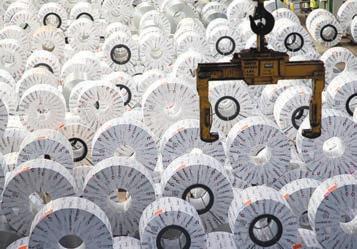

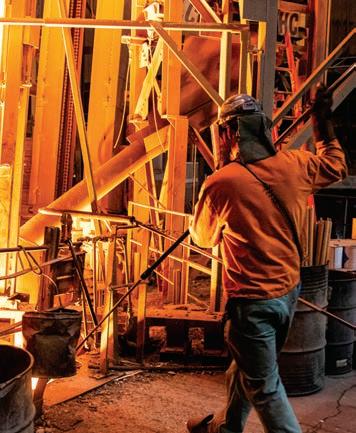


Our commitment to all aspects of sustainability is embedded in our founding principles—valuing our people, our partners, our communities, and our environment. We are intentionally sustainable in our strategy, growth, and business framework. Our mills produce steel exclusively utilizing EAF technology, which uses recycled ferrous scrap as the primary raw material. This method of steelmaking has a much lower environmental impact when compared to traditional steelmaking technology.
As we have grown, we have intentionally made capital investments and acquisitions within this environmentally preferred technology, while also increasing our product and end market diversification and percentage of higher-margin, value-added products we sell. We also focus on providing supply-chain solutions for our customers, which usually provide convenience and savings to them, as well as decreasing logistics needs and other resource consumption.
Our growth strategy focuses on increasing through-cycle cash generation and providing growth opportunities for our people, partners, communities, and shareholders—all while keeping the sustainability of resources and carbon impact in focus.
10K+ $18.4B Team Members
2021 SUSTAINABILITY REPORT | ABOUT STEEL DYNAMICS

We intentionally developed a vertically connected operating model, further strengthening our company. Our metals recycling platform collects and processes scrap from manufacturing and end-of-life items, such as automobiles, appliances, and machinery. This processed scrap is then sold to end users for reuse, including our EAF steel mills, which produce new steel from the scrapped material. Our steel is then sold to consumers that both further process steel and manufacture end products. We sell a meaningful amount of steel to our own manufacturing businesses that in turn sell finished products to consumers. Ultimately, when these products reach the end of their useful lives, they can be collected as scrap and used again in our steelmaking operations, creating our circular manufacturing model.

This closed-loop model is also utilized in some of our smaller unique operations, including using copper scrap to produce new copper rod and wire, using aluminum scrap to create raw aluminum materials for the steel and foundry industries, and using secondary materials to produce liquid pig iron used in our steel operations. We are driven to use our resources wisely and to develop innovative solutions to help in this conservation process.

Our steel operations consist of seven EAF steel mills and numerous value-added coating operations. We offer the most diversified, value-added product portfolio in the domestic steel industry and provide innovative supply-chain solutions to exceed customer expectations, delivering significant value. Our steel operations produce steel products, including hot roll, cold roll, and coated sheet steel, structural steel beams and shapes, railroad rail, engineered special-bar-quality steel, cold finished steel, merchant bar products, and specialty steel sections. Our steel operations shipped a record 11.2 million tons of steel in 2021.
Our steel fabrication operations include seven New Millennium Building Systems plants that serve the North American nonresidential and multistory residential construction industry. From steel joist and decking to long-span composite floor systems, we engineer and manufacture construction solutions that control costs, enhance performance, and lead to project success. Our steel fabrication operations produce steel building components, including steel joists, girders, trusses, and decks. In 2021, our steel fabrication operations achieved record shipments of 789,000 tons.
We are the largest ferrous and nonferrous metals recycler in North America. Our metals recycling operations consist of our OmniSource facilities, strategically located in geographic proximity to our steel mills and other scrap consumers. Our metals recycling operations collect and process ferrous and nonferrous scrap from manufacturing and endof-life items, such as automobiles, appliances, and machinery. This processed scrap is then sold to endusers for reuse, including within our EAF steel mills. Additionally, our metals recycling operations offer transportation, marketing, and brokerage and scrap management services. Our metals recycling platform works synergistically with our steel mills to ensure the supply of low-cost, high-quality raw materials, internally supplying 42% of our steel mill needs of ferrous materials, and shipping 5.4 million ferrous gross tons and 1.1 billion nonferrous pounds in 2021.
INTENTIONALLY SUSTAINABLE
2021 EXTERNAL REVENUES
Steel Metals Recycling




Steel Fabrication
10% 72%
Other Operations
12% 6%
OUR CIRCULAR MANUFACTURING MODEL IS DRIVEN BY THE PASSION AND DEDICATION OF OUR INNOVATIVE TEAMS AT EACH OF OUR OPERATING PLATFORMS.
DIVERSIFIED END MARKETS

Based on 2021 Steel Operations Shipments
Awards and Recognition
Our recognition is due to the extraordinary passion and spirit of excellence exhibited by our teams. It is their drive and dedication to keep each other safe, to create innovative product and supply-chain solutions, and to be a leader in the industry that propels Steel Dynamics to the highest standard of operational and financial performance.
Shipped
The entire Steel Dynamics team delivered an outstanding performance during 2021. Our strategic growth and market positioning over the last several years were integral to our performance. We achieved numerous milestones and performed at the top of our industry, both operationally and financially.
On almost every measure, our 2021 performance represented a record year. Our steel and steel fabrication operations achieved record product pricing and shipments, increasing 2021 revenues to a record $18.4 billion. Each of our three primary operating platforms achieved record annual earnings, resulting in record consolidated operating income of $4.3 billion and record net income of $3.2 billion.
Steel Dynamics was the only U.S. steel producer receiving this designation and one of only 236 U.S.-based businesses to make the 2021 list, which is comprised of 750 global companies.
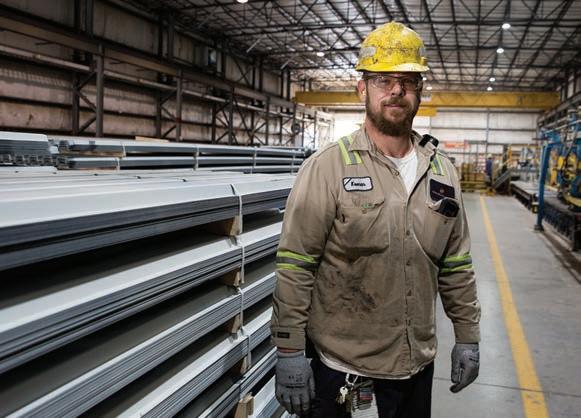
Steel Dynamics was the only U.S. steel producer receiving this designation, and one of only three steel producers globally.
Steel Dynamics ranked No. 1 within the metals industry. The World’s Most Admired Companies’ annual list is a ranking of the world’s most respected and reputable companies, and is determined based on nine key attributes: innovation, people management, use of corporate assets, social responsibility, quality of management, financial soundness, long-term investment value, quality of products and or services, and global competitiveness.
Steel Producer of the Year by Fastmarkets is one of the most recognizable award programs for the global steel industry.
This award recognizes our outstanding executive leadership and is determined by buy-side analysts, money managers, and sell-side researchers at securities firms and financial institutions.
INTENTIONALLY SUSTAINABLE
Our Pillars
We refer to our founding principles as our six core strategic pillars. They bring us together with a common focus, and they provide the foundation upon which we operate and grow. Our unique entrepreneurial culture and business model benefit us operationally, financially, and through the responsible use of our resources in varying economic environments. Innovation in all forms is essential to our success, and our teams’ focus on how to do things “smarter” within our current operations, as well as how we continue to grow. This means creating solutions for our teammates, customers, suppliers, and shareholders. It also includes finding ways to do business with fewer resources and less environmental impact.
Health and Safety
Goal of zero injuries—No accidents
Differentiated Model
Competitively advantaged differentiation is core to our long-term value creation strategy. We set ourselves apart in every aspect of our business with a spirit of excellence.
Our Unique Entrepreneurial Culture
Our entrepreneurial culture is at the core of our success and is driven by our extensive, performance-based incentive compensation philosophy—from those on the plant floor to our senior leadership. Over 60% of a production team member’s total potential compensation is “at risk” to both quality production and cost-effectiveness metrics. Over 85% of our senior leadership team’s total potential compensation is “at risk” to companywide financial performance metrics that encourage long-term value creation, including return on equity, growth, cash generation, and return on invested capital measures. We believe diversity within our teams enhances broad-based thinking, innovation, and value creation. Our common goal of consistently achieving excellence in all we do is reflected in the esprit de corps that permeates our team.
Our Diversified, Value-Added Product Offerings and Supply-Chain Solutions

Foster a team of energetic, positive, driven, innovative, and diverse individuals
Entrepreneurial Culture Customer Commitment
Preferred partner providing quality products and unique supply-chain solutions
We have the most diversified, high-margin product offering within the domestic steel industry. We have a track record of profitable growth, driving diversification in both end markets and value-added product offerings to sustain higher volume and profitability through varying market environments. Over 70% of our steel and steel fabrication revenues are considered value-added. Throughout our history and today, we seek to provide unique supply-chain alternatives for our customers in order to increase efficiency, reduce time and costs, and to promote decarbonization opportunities. Growing with our customers in this way has proven to be invaluable in creating long-lasting relationships and product development.
Margin expansion and consistency through the cycle
Improve safety, quality, productivity, and resource sustainability
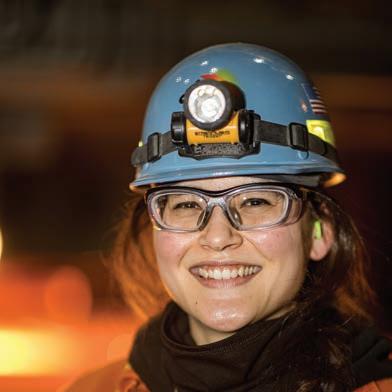
Strategic Sustainable Growth Innovation Financial Strength
Higher asset utilization and lower costs provide strong cash flow generation
Our Vertically Connected Businesses and Pull-Through Volume Advantage

Our vertically connected businesses contribute to our higher through-cycle steel production and overall profitability. Our internal manufacturing businesses are a significant competitive advantage for supporting higher and more stable through-cycle earnings and cash flow generation. Our steel fabrication operations and downstream processing locations use a significant amount of steel in their operations. During weaker steel demand environments, we can source their steel needs internally, and during strong steel demand environments, we have the option to also purchase their steel needs externally. Ultimately, we optimize our companywide profitability and minimize earnings volatility. A strategic and synergistic relationship also exists between our steel and metals recycling operations. Our metals recycling platform is the largest supplier of recycled ferrous scrap to our steel operations. This allows us to reduce companywide working capital, as lower scrap volume is required at our steel mills. We are also able to source higher-quality scrap for our steel mills, optimizing cost and quality.
Our Technically Advanced, Low-Cost, Highly Efficient Operations
We operate some of the most technically advanced and environmentally responsible steel mills in the world. Our steel mills generate a fraction of the GHG emissions per ton of steel produced as compared to traditional blast furnace steel production and the average global steel industry. Our value-added product diversification, vertically connected businesses, and performance-based incentive compensation programs support our efficient, environmentally responsible, and competitively advantaged footprint. Coupled with our low-cost, highly variable operating cost structure and our continued operating innovation and efficiency, we are one of the most profitable and lowest-cost domestic steel producers.
Our Sustainable Through-Cycle Operating and Financial Performance
Based on our low, highly variable cost structure, competitive differentiation, adaptable value-added product mix, and performance-based incentive compensation programs, we are able to consistently outperform our industry peers in all market environments, while providing strong cash flow generation for asset optimization, innovation, and future growth.
Our Strong Capital Foundation
All of these factors drive a preferred, adaptable financial foundation to responsibly support both current operations and continued meaningful strategic growth. We are committed to responsible growth to optimize earnings and maintain investment-grade ratings.
VALUING PEOPLE 04
Leadership Commitment
Safety is our first core strategic pillar—it is the foundation of decision-making. Safety is always at the forefront and is discussed regularly across the company, whether led by a team member from the plant floor, a supervisor, or a manager. Leadership is engaged and continually evaluates where we can improve. We believe having every individual engaged in safety will lead to zero injuries. We are committed to achieving world-class safety performance throughout our operations. This commitment is foundational and integral to our culture. Working as one team, we will achieve it.
Individual Team Engagement
Our long-term success is driven by our culture, individual health and safety, respect, inclusion and diversity of experiences and backgrounds, and talent development opportunities. We value the dedicated people whose passion, innovation, and spirit of excellence have helped successfully grow our company and serve our customers.
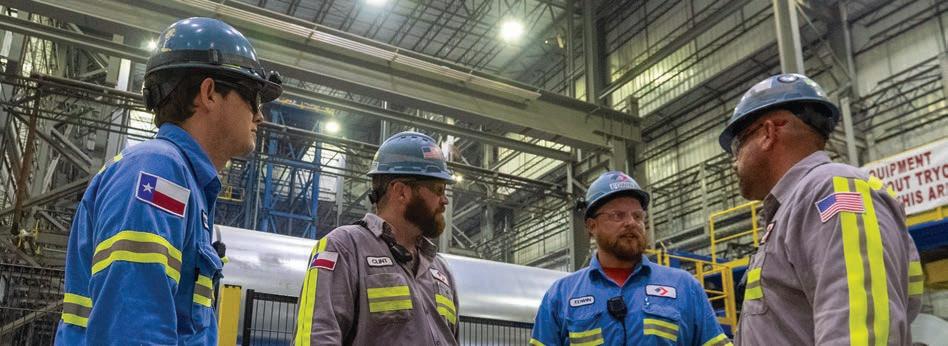

Safety
Valuing people includes providing a healthy and safe work environment and creating a culture of safety that extends beyond the workplace, into our homes and communities. Safety is and always will be our primary focus and core value. We intend for each individual to arrive at the workplace and return home safely to their families each day. This is achievable when we all work together. It requires commitment from leadership and team members at every level to take ownership and responsibility for their safety and the safety of others. Under no circumstance does anything, including the desire to maximize production or earnings, override the value of individual safety.
Individual engagement is a critical success factor to each team member going home safely each day. It is our desire to inspire our teams to do the right thing, even when no one is watching. Team members are responsible for working safely, not only for themselves, but for their families, loved ones, and fellow team members.
Safety Program
We continually look for ways to refine and improve our safety programs to ensure a safe outcome for everyone. We discuss our safety programs and performance with our Board of Directors at each meeting. The leadership team and safety professionals located throughout our businesses are responsible for implementing, monitoring, and evaluating the programs.
Our ultimate success depends on the awareness and personal commitment of each of our team members. It is everyone’s responsibility to be committed to their own safety and to the safety of others. Each individual is appropriately trained for their position and is expected to be thoroughly knowledgeable of and performing all safety practices. We encourage anyone with ideas for safety improvement to share their thoughts with other team members and leadership. In fact, we have found and embrace the fact that many of the ideas to improve safety come from operational team members.
We place a high priority on individual and team awareness, while constantly encouraging and promoting the identification and removal of potential hazards, with a goal of eliminating potential injuries. This forward-looking approach to safety has most recently led us to focus on specific actions in three key areas:
Core Safety Group
As one of our steps to creating a “World Class” safety environment, we formed the Core Safety Group (CSG), which guides our companywide safety culture and programs for 100% of our team members. The CSG consists of rotating members with both safety and operational expertise from each of our primary operating platforms: Steel, Steel Fabrication, and Metals Recycling operations. The CSG is the vehicle for our coordinated safety communications, collaboration, and alignment throughout all of our businesses and locations.

The Core Safety Group’s primary function is to guide our overall safety programs toward the achievement of zero injuries. The CSG meets at varying company facilities across all operating platforms and conducts onsite safety walk-throughs, interacting with location team members, safety coordinators, and local management to learn “what is” and “what may not be” effective with regard to companywide safety practices. This process provides value not only to each individual location, but also to the CSG when establishing best practices for companywide safety. We believe this is an essential means of improving safety, as the best ideas are derived from those individuals that are nearest to the work being performed.
The collaboration across locations, divisions, and platforms led by the CSG has resulted in numerous safety advancements throughout our businesses. Furthermore, many of our facilities have started their own safety groups that monitor and drive superior safety performance within their facilities by involving local leadership and engaging fellow team members.
Control safety for yourself—keeping safety top of mind
Control safety for your team— being one another’s keeper; See Something, Say Something, Do Something
Identification and elimination of hazardous exposures that could result in potentially significant life-altering injuries
Highlights
Across our facilities, new team members wear a different colored hard hat to signify that they are new to the facility to aid others in easily identifying them. At SDI LaFarga, our copper rod and wire manufacturing operations, new team members are given a red hard hat to wear in their first 90 days of employment. Upon successful completion, a blue hard hat is provided in a ceremony. The team gathers everyone to form a circle around the individual to officially recognize the individual as a team member with more operational experience and a commitment to safety.

Each new blue hard hat team member goes to each individual present and asks one simple question: “Will you be safe for me?” In turn, the same question is asked back to them. This is a verbal declaration that safety is the number one value and top priority. Team members sign the inside shell of each new team member’s hard hat to serve as a visual reminder that safety is not just a personal choice. Our individual actions impact everyone.
Connecting Subject Matter Experts
In certain cases when a safety initiative is identified, the CSG will form a team of subject matter experts from across the company to develop solutions for specific safety challenges. We believe this practice produces better results and encourages greater support and execution throughout our operations. These subject matter experts serve as an additional valuable resource for team members. As an added benefit, these individuals form relationships across our businesses, establishing ongoing communication and collaboration.
Take Control of Safety
During 2019, the CSG formed a special task force, to continue our pursuit of eliminating all injuries and to specifically target the elimination of scenarios that present the potential for a serious injury or fatality (PSIF). We believe by doing this, we will see broadbased improved safety performance across our businesses. The task force identified ten critical components necessary to achieve this goal:
l Leadership Commitment
l Hazard Awareness and Recognition
l Quality Safety Training

l Safety Alerts
l Supervisor and Team Member Conversations
l See Something, Say Something, Do Something
l Safety Mentors
l Sharing a Safety Message
l Contractor and Visitor Safety
l PSIF Management Program
Each of these components is a call to action for leadership, location management, line supervisors, and each team member. We identify this overall initiative as “Take Control of Safety.”
Leadership’s commitment and dedication to ongoing safety enhancement is evidenced by the annual creation of Division Safety Plans. This process requires each of our facilities to establish actionable plans for both near- and long-term continuous safety improvement.
Hazard Awareness and Recognition
All safety incidents are expected to be reported and investigated within the Steel Dynamics Incident Management System so that all recognized hazards can be addressed to control exposure.

Processes have been developed to proactively identify and control hazardous exposures associated with both routine and non-routine tasks. Our teams conduct routine safety audits and review procedures to identify potentially hazardous exposures and to ensure a method for controlling these. Team members are encouraged to proactively identify potential hazards within each job they perform and work with their management teams to implement methods to control these exposures.
In 2021 the CSG developed a mobile application for our Incident Management System. This application is utilized in the field, engaging team members and contractors in hazard identification, as tasks are being performed. It provides a meaningful opportunity to address exposures proactively.
Quality Safety Training
We ensure that appropriate safety training is provided to all individuals in their respective roles. Training covers a variety of safety and health topics, focusing on safe work practices and company expectations, ensuring that all team members are optimally equipped to perform their tasks safely. In addition, we regularly provide information to team members through various internal communication channels, such as team meetings, one-on-one conversations, guest speakers, location postings, and other mechanisms.
We maintain a comprehensive safety training program that includes annual training initiatives for each location. Key safety topics are specifically identified to match the unique need of each facility. To remain relevant, updates are made regularly based on the latest safety findings. By maintaining a formal list of safety topics, we keep these initiatives top of mind.
Safety coordinators, company leaders, and third-party trainers regularly engage team members in high-impact safety discussions and active learning sessions, utilizing examples of actual incidents and other relevant content to keep safety top of mind and to help in the identification and prevention of hazardous exposures for themselves and their teams.
Safety Alerts
Reaching our goal of zero safety incidents requires a culture of open communication where teams are regularly learning from incidents and best practices. Through collaborative communication, we keep safety top of mind by sharing ideas and raising awareness at the highest levels. When safety-related incidents or “near misses” occur at any of our facilities, management teams share relevant details of such incidents via communications we refer to as “Safety Alerts.” These alerts are shared throughout the entire company and viewed as positive opportunities to learn, improve, and prevent future incidents.
Making Safety Conversational
Programs, policies, and data all have a role in supporting safety performance, but communicating the personal aspect of safety often has the greatest impact. “Toolbox Talks” occur throughout our operations and cover a variety of work-related and athome safety topics. Supervisors also frequently initiate private one-on-one safety conversations with their team members to express genuine concern for their individual safety and to encourage the individual to use them as a resource. We believe that these frequent safety-focused conversations, which are often centered on our Take Control of Safety initiatives, help to make safety personal and to keep safety top of mind for our team members.
See Something, Say Something, Do Something
Our team members embrace personal responsibility for not only work being performed by themselves, but also the work that is being performed by others. All team members are expected to address any perceived unsafe actions or conditions. If approached by someone concerning safety or any matter, team members are expected to be respectful of the other individual’s perspective and to collaboratively discern the safest resolution. We acknowledge that confronting peers with safety concerns can be uncomfortable. However, we firmly believe that we must all consider it as an obligation to help ensure that everyone returns home safely to their families each day. We emphasize this obligation and celebrate these interactions as part of our culture. In 2021, we developed a custom training course, specifically focused on safety culture and the “See Something, Say Something, Do Something” component of the Take Control of Safety initiative.
Safety Mentors
Another component of the Take Control of Safety initiative calls for safety mentors to be matched with new team members to assist with their safety onboarding and education. We believe this approach to onboarding new team members is critical to ensure that we continue to maintain and further enhance our overall safety culture.
Contractor and Visitor Safety
We expect all our service providers to operate with the same level of health and safety practices as we demand from ourselves. All contractors performing work within our facilities, including off-site locations, are expected to adhere to the company health and safety management programs. They are expected to prioritize the safety of their own teams by providing safe and healthy working environments. Within our steel operations where we utilize a larger volume of suppliers and contractors, we use a third-party contractor as part of the safety qualification process. The third-party contractor collects and verifies contractor data, including written health, safety and environment programs, injury and illness statistics, and training at both the individual and company level. At our other locations, our safety professionals gather and track similar information to assure we are utilizing suppliers, vendors, and contractors with strong safety practices in place.
PSIF Management Program
As noted earlier, all safety incidents are expected to be reported and investigated within the Steel Dynamics Incident Management System so that all recognized hazards can be addressed to effectively control exposure to such hazards. This system provides guidance to ensure that we accurately determine if an incident is a PSIF. PSIFs go through a rigorous review and evaluation to perform effective root-cause analysis and develop a comprehensive list of corrective and preventive actions.
Health
Our teams’ health and wellbeing are inextricably linked to their safety. We have nurses available at all of our major locations. We believe it is critical to the support of our operational teams’ health. During the last several years, we significantly increased the number of onsite nurses. Our nursing team implements health and safety programs and provides guidance regarding safe practices at work and home. They also provide wellness education, ergonomic assessments, and education on healthy sleep, nutrition, and exercise. Our nurses help our teams make healthier, well-informed choices and at times, find outside resources for managing their health. Our nurses work alongside our safety professionals to prevent injuries and illnesses, and to care for our teams. They perform triage, provide care resources, and help manage individual health- and safety-related incidents. Our nurses participate in continuing education and training to stay abreast of current matters and best practices.
Our nursing team also has extensive knowledge of our operations, which allows them to best provide for the health and safety of our people. Our nurses get to know individuals and provide care for occupational health issues, along with guidance on both occupational and non-occupational matters.
Some services include:
l Health education and promotion
l Worker and work hazard detection and prevention
l Disease prevention
l Counseling and crisis prevention
l Blood donation opportunities
l Smoking cessation
l Proper body mechanics
l Health risk assessments and screenings
Many of our locations hold health and safety fairs that provide health and safety training and other health-related educational opportunities.
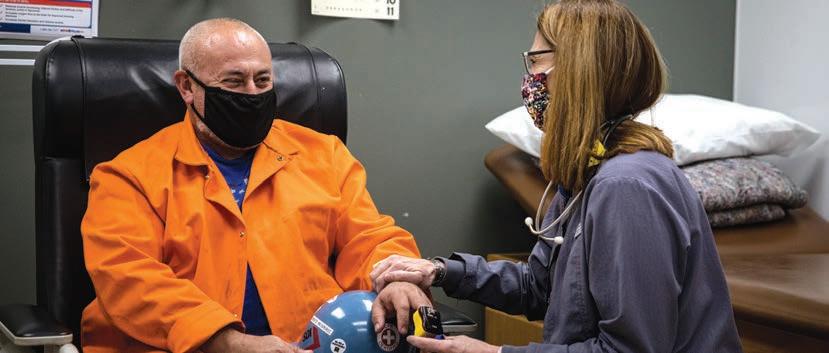
Coronavirus (COVID-19)
During 2021 and 2022, we continued to confront the global spread of COVID-19, with our team’s health and safety—the primary objective and focus. We were proactive in early 2020 and implemented numerous practices and policies to protect our colleagues. We continue to monitor the situation and take steps to provide an environment that protects our people, their families, and our communities, while also serving our customers.
Performance-Based Incentive Compensation
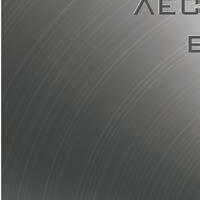

Stock Awards
Aligns team members with shareholders in pursuit of long-term value creation

Profit sharing, 401(k) Match

Unites team members of the business segments in promoting the success of the company as a whole




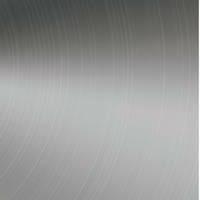

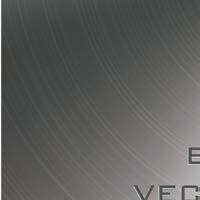


Production, ROA, Conversion Bonuses



Teamwork and performance bonuses focus on productivity, cost control, and efficient use of assets
Base Pay

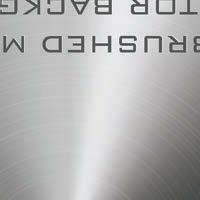
Rewards individual for superior performance, responsibilities, and personal skill level
People Drive Everything We Do
Above all, we value the dedicated people whose passion, innovation, and dedication to excellence have helped successfully grow our company and serve our customers. We have a culture of trust, fostered through individual empowerment and accountability that drives decision-making throughout our business. Our performance-based incentive compensation programs align us with the interests of our strategic long-term growth and our customers, communities, and shareholders. We know our teams will do what is right and that trust comes from effective communication and transparency.
Performance-Based Incentives Drive Superior Results




All team members have ownership of their area of responsibility, and this autonomy is complemented with accountability. We believe those closest to an issue will ultimately determine the best, most effective solution when given the right tools and opportunity to do so. We believe the best decisions are made by those closest to the task. We empower people with performance goals, align their interests with the company’s long-term strategy, provide them with the right tools and resources, and watch them succeed.
INTENTIONALLY SUSTAINABLE
We believe in empowering our teams and rewarding them for their achievements through a four-tiered, performance-based compensation framework. The various components of our compensation programs promote a balance of high-return growth, effective capital investment, low-cost operations, and risk mitigation. By rewarding our teams based on their performance as an individual, as a team, as a company, and based on shareholder interests, we believe we have the ultimate alignment with our external constituents.
Individual performance awards consist of an individual’s base compensation, which is determined by their individual performance, responsibilities, and skills.
Team performance awards are based on departmental results, rewarding cost effectiveness and quality production. Our performance-based incentive programs reward team members for reducing waste and increasing efficiency, while also producing quality products for our customers. These awards can be well over 100% of base wages, based on strong performance and on the teams doing things that are within their control.
Companywide performance awards unite everyone through our profit-sharing program, which is based on consolidated pretax profitability, and our 401(k) match, which is based on consolidated return on assets.
Finally, alignment with our shareholders and the pursuit of long-term value creation is fostered through the issuance of restricted stock units. Each full-time, non-union, United States-based team member receives annual equity awards. These awards have a twoyear vesting period, supporting retention and companywide strategy alignment.

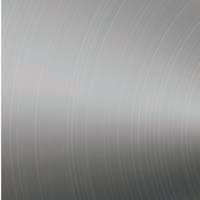
Our team-based culture and competitive pay structure supported continued high retention. In 2021, our overall retention was 81%, with U.S.-based teams and steel team retention of 86% and 91%, respectively.
Our compensation framework helps ensure that we remain strong with best-in-class performance and retain top talent even in economic downturns. We all share in the company’s successes, as well as the challenges.
Talent Development and Educational Opportunities
Our people represent the foundation of our six strategic pillars. Their continued education and talent development are paramount to our success. Our educational assistance and development programs encourage personal growth so individuals can remain current in their areas of responsibility, as well as develop new skills for advancement. Senior leadership plays a key role in our development programs, linking our culture to critical, proven leadership concepts. As we continue to grow, building talent and creating opportunities within our teams is one of our most important tasks and critical to our long-term success.
Talent Development
Dynamic Development is one of our leadership talent development programs, and it is designed to enhance individual leadership skills across the company, while embedding the tenets of our unique vibrant culture. In partnership with a local university, we develop educational programs that link individual professional development with our business strategies and rich culture. University faculty, external subject matter experts, and our own leadership teams facilitate these courses. Among many topics, we focus on culture, leadership skills, effective communication, accounting and finance matters, strategic thinking, and emotional intelligence, including how we relate to each other in all matters.
Dynamic Leadership
Dynamic Leadership is our supervisor talent development program, and it is designed to provide frontline supervisors with the necessary tools to positively impact our operations and those individuals on their team by creating a safe, positive, innovative, and effective environment and to equip them with the skills necessary to build an empowered workforce. Our supervisors have considerable responsibility and serve in a critical role, as the experience and development of a majority of our team members are directly impacted by these individuals.
Technical Skills Development
By partnering with local community colleges, we are investing in our communities and growing our collective technical capabilities. This program provides an individual with the opportunity to learn customized skills, while being trained and mentored at work. The objective of the program is to combine a stimulating curriculum with academic theory, as well as hands-on training to ensure technical mastery. At the end of this program, the individual continues a career with us with the added benefits of an enhanced skill set and a two-year college degree. The apprentices’ cost of tuition is sponsored by Steel Dynamics and the apprentices also earn compensation.
Team Benefits
Steel Dynamics provides a robust benefits package. We believe that the entire Steel Dynamics family should share in the prosperity of our company, not only through bonuses and profit sharing, but also through the programs that optimize health and welfare, education, and the many other benefits that are provided.
Be Well Program
A healthy company cannot exist without healthy team members. The everyday choices we make help us all live healthier, happier, and more productive lives—both at work and at home. That is why Steel Dynamics offers Be Well as a valuable part of our benefits package. Be Well incentivizes team members to: receive an annual health assessment, have biometric screenings performed, attend preventive health appointments, utilize available condition care, coaching and tracking activity services, and participate in health challenges. We are committed to the health and well-being of our team, urging teammates to focus on wellness. When it comes to health, we encourage everyone to take charge, take action, take care, and be safe!
$21M
Of scholarships were given to children of our team members over the last 10 years
$388M
Of profits were shared with eligible team members in 2021
In 2021, Steel Dynamics was recognized as having a Best-in-Class 401(k) Plan by PLANSPONSOR, meeting “the highest standard of excellence,” as deemed by their research and editorial teams. In 2021, over 95% of eligible team members contributed to the Steel Dynamics Profit Sharing and Retirement Savings Plan with an average contribution rate of 11%.
In 2021, the Indiana Office of Career and Technical Education recognized Steel Dynamics with an Award for Excellence for Outstanding Secondary/ Post-Secondary Career and Technical Education Partnership. The award was given in recognition of our partnership with Ivy Tech Community College Fort Wayne.
Workplace Philosophy— Inclusion and Diversity
Our people are the foundation of our success and are our most important resource. Our culture safeguards all people and requires each person to be treated fairly and with dignity. We have equal employment opportunity, no tolerance for harassment of any kind, respect for human rights, inclusion, and diversity—all of which focus on our expectations of treating every person with the utmost respect. Our leadership receives recurring training on these critical topics.
We provide equal employment opportunities to all individuals and applicants. This philosophy of fairness extends to work assignments, opportunities for advancement, compensation, training opportunities, and all other aspects of employment. All jobrelated considerations are based on merit and ability, without regard to race, color, religion, creed, sex, sexual orientation, gender identity or expression, national origin, genetics, age, marital or veteran status, pregnancy, the presence of handicaps or disabilities, or any other basis protected by law. We provide accommodations as required by applicable laws, including for disabilities and religious beliefs.
We recognize the value of having a business that reflects diversity of backgrounds and experiences. We work together as a unified team and respect each other as individuals. Our team-based compensation structure reinforces this philosophy. We strive to create a welcoming, open, and inclusive environment, ensuring the best ideas are heard and valued regardless of the position or the individual. We believe these ideals will continue to drive our success.
Our teams and colleagues represent the diversity of the communities where we live and work. Our teams are representative of our industry and communities with 11% of our colleagues being female and 29% of our colleagues considered ethnically diverse in 2021. Additionally, of the eight individuals that were on our senior leadership team in 2021, one is female and one is ethnically diverse (Hispanic).
We respect human rights, which includes providing safe work environments for our people, providing fair compensation based on job responsibilities and performance, and ensuring all team members meet minimum age requirements and eligible working status to qualify for employment.

We do not tolerate harassment or disrespect of an individual or group for any reason. Harassment of a team member is prohibited, both in the workplace and off the premises. We forbid harassment by any personnel of a customer, vendor, or any other person. Likewise, we prohibit harassment of our teams in any way related to their interactions with customers, vendors, or any other person related to their work responsibilities.
Recruiting
We are intentionally casting a wider net to broaden our recruiting pools to ensure we have a diverse group of candidates. With hiring events, inclusion efforts are made to ensure we reach a diverse group of candidates. On the college campuses where we recruit, we send introductory and promotional materials about Steel Dynamics to various clubs, groups, and organizations to ensure diverse candidates are educated about Steel Dynamics and are aware of our upcoming recruiting events.
OUR TEAMS AND COLLEAGUES REPRESENT THE DIVERSITY OF THE COMMUNITIES WHERE WE LIVE AND WORK.2021 Employee Diversity Metrics
VALUING CUSTOMERS, SUPPLIERS, AND SHAREHOLDERS 05
Partnering with Our Customers
We are influenced and supported by numerous external constituents, including our customers, suppliers, vendors, and shareholders. These relationships have contributed to our sustainable growth and continued success.
Our Customers are Integral to Our Success
We want to grow and innovate alongside our customers, providing differentiated highquality products and supply-chain solutions to meet their current and future needs. We have one of the most diversified steel product portfolios within the industry, with over 70% of our steel and fabrication sales derived from value-added products.

We thrive on the long-lasting partnerships we have established with our customers. At every step, our actions are meant to promote the highest degree of trust and transparency. No false promises—we do what we say we are going to do, when we say we are going to do it.
We want our customers to look to us for new products and services—for solutions to their needs. We have made numerous changes to supply-chain dynamics and product deliverables that have meaningfully benefited the customer through cost reductions, time savings, reduced working capital investment, and shorter supply chain.
Our focus is to grow and innovate alongside our customers, providing differentiated products and solutions to meet their needs. Our existing flat roll steel customers are also significant consumers and processors of aluminum flat rolled products, seeking a high-quality sustainable supply alternative. In July of 2022, we announced our plan to construct and operate a lower-carbon emitting, recycled aluminum flat rolled mill, with two supporting satellite recycled aluminum slab centers. We plan to produce lowercarbon aluminum flat rolled products, with high scrap content.
Metals Recycling
Our metals recycling platform offers custom-tailored recycling programs for larger, scrap-generating companies, such as the automotive and industrial manufacturing industries. We provide the most comprehensive customer-service package available in the industry today. Our ultimate goal is to increase customers’ efficiency, allowing them to concentrate on their core businesses, while we benefit from procuring higher volumes of recycled scrap for use in our operations.
We also help clients design and install automation that promotes increased efficiency, enhanced safety, and environmentally compliant practices.
Steel Dynamics Columbus Flat Roll Division was awarded the 2021 Lennox Diamond International Supplier Excellence Award, their highest supplier award

Steel of West Virginia was awarded the 2021 Wabash Platinum Supplier Award

Marshall Steel Inc. was awarded the 2021 Hyundai Recognition Excellence Award
New Millenium Building Systems was awarded the 2021 Steel Joist Institute Design Award
Steel
Our Southwest-Sinton Flat Roll Division (Sinton Steel Mill) is a state-of-the-art facility, with product capabilities beyond existing domestic EAF producers, competing even more effectively with the integrated steel model and foreign competition. We are strategically targeting underserved markets that are largely reliant on imports with long lead times and lower product quality capabilities, providing customers throughout the Southwest United States and Mexico significant logistics savings, shorter delivery lead times, and working capital efficiency.
We designed our property to allow several customers to locate onsite at our Sinton Steel Mill, providing a significant competitive supply-chain advantage for all of us. We have implemented our circular manufacturing model onsite, utilizing our customers’ industrial scrap to produce new lower-carbon steel products. We currently have seven onsite customers, representing 1.8 million tons of annual flat roll steel processing and consumption capability. All of these customers are either operating or under construction.
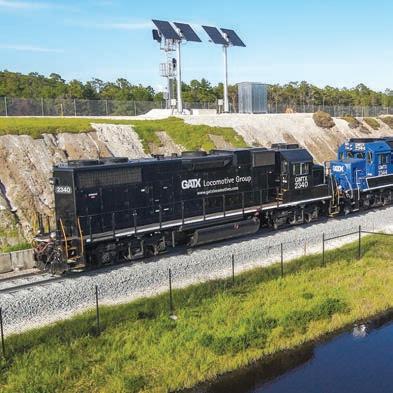
Steel Fabrication
Our New Millennium Building Systems operations work closely with construction project teams at each step of development, from early design collaboration to successful project completion. We look at projects from the customers’ perspective to build a better steel experience. Those perspectives feed our collaborative approach throughout a project. From steel joists and deck to long-span composite floor systems, we engineer and manufacture solutions that:

l Control costs
l Solve engineering challenges
l Enhance performance
l Achieve architectural visions
l Ensure project success
1.3K
The project’s hallmark feature is a majestically curving, sloping roof inspired by the nearby Spring Mountains, with a “peak” 116 feet high. Creating the “ribbon” roof, which also slopes from front to back in key places, required standard type N roof deck. A dovetail roof deck covers a massive and equally impressive main exhibit hall. New Millennium Building Systems supplied 1,300 tons of these roof deck profiles and a standard composite floor deck for the interior. The roof and floor decks combine to achieve the desired exterior appearance while also meeting structural and acoustic demands throughout the space.
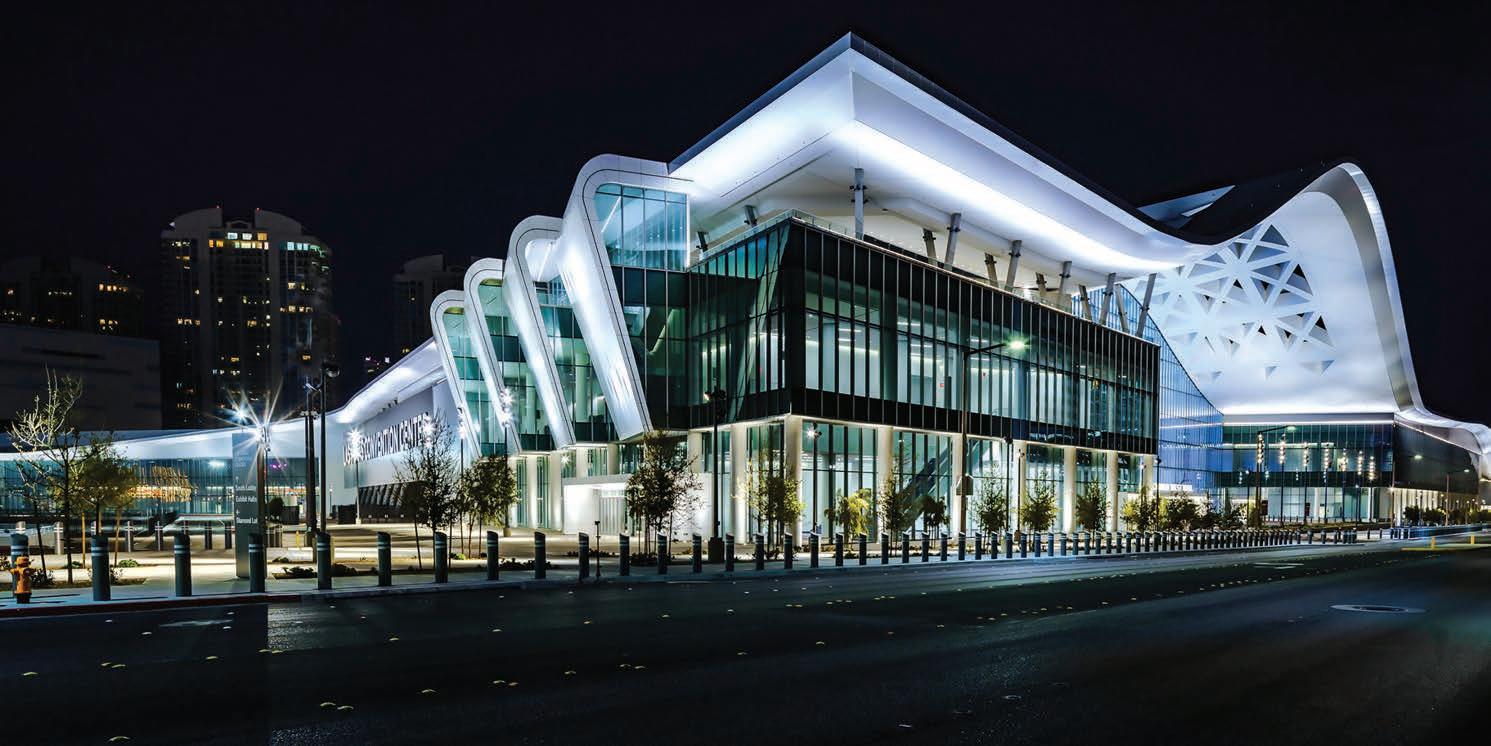
Our Suppliers and Vendors
We have many strong long-term relationships with our suppliers and vendors, ensuring quality service, supplies, and other deliverables to ensure efficient and effective operations. There is a high degree of collaboration to optimize the cost and efficiency within our businesses.

We expect all of our service providers to operate with the same level of safety and social practices as we demand from ourselves. They are expected to prioritize the safety of their own teams by providing safe and healthy working environments.
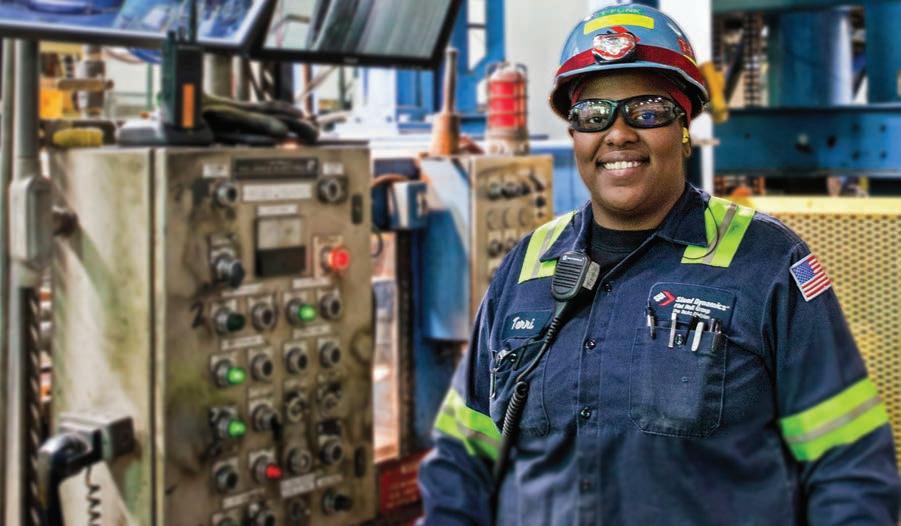
We also expect the same level of integrity and good judgment as we require from ourselves. They are expected to abide by our Supplier Code of Business Conduct and to have and enforce their own comprehensive codes of business conduct that prohibit unethical or unlawful behavior in all aspects of their business.
We expect them to be good stewards of the environment and to comply with all environmental laws and regulations regarding waste and emissions. We also encourage vendors to employ recycling programs to minimize waste, energy consumption, and water usage, and to pursue opportunities to reduce any detrimental impact on our physical world.
Our Shareholders
We value the support, interest, and feedback of our shareholders. Thus, we actively engage shareholders to build and sustain longer-term relationships.
Consistent investor outreach is fundamental to our commitment to communication and transparency with our shareholders. We are committed to engaging with our investors on topics of importance to both them and us. We regularly reach out to our investor base. Our discussions cover topics based on publicly available information, such as strategic near- and long-term growth initiatives, capital allocation philosophy and execution, sound governance practices, performance-based compensation philosophy, sustainable business model, renewable energy and decarbonization initiatives, and similar matters. This process aids our Board to ensure issues important to our investors are appropriately understood and considered.
In addition to our regular shareholder engagement, we engage annually with a number of large institutional investors with dedicated governance teams to better understand their policies and concerns regarding environmental, social, and governance (ESG) practices and other important matters. During 2021, we reached out to our top institutional investors representing 50% of our outstanding shares, and a large number of these institutions accepted our offer to engage with us.
We communicate with our shareholders through various methods, including inperson meetings, virtual meetings, investors conferences, investor roadshows, Securities and Exchange Commission filings, quarterly earnings calls, investor presentations, and press releases. Additionally, members of our senior leadership and investor relations team provide an open forum to each investor to comment on any matters they wish to discuss, including ESG practices, our long-term growth strategy, and capital allocation philosophy.
This outreach initiative assists us and our Board to fully understand the perspectives of our investors with respect to our ESG practices and other matters of importance to them. We also consult the publicly available policies of our major investors to better understand their views on ESG and other matters of importance to them. These meetings provide senior leadership and the Board with valuable insights into our investors’ perspectives.
VALUING THE ENVIRONMENT 06

We are committed to operating our business in an environmentally responsible manner and have been since our founding. Our mills produce steel exclusively using EAF technology with recycled ferrous scrap as the primary raw material. EAF production is the best commercially available steelmaking technology environmentally, is the most cost effective, and provides the most operational flexibility; as such, it has been our method of growth for our steel operations. We encourage the research and use of new technologies and processes to further reduce our impact on the environment, including a strategic focus on lowering carbon emissions.
Through our innovation and intentional growth strategy, our combined business platforms also create a circular manufacturing model, benefiting us financially while also mitigating our environmental footprint.
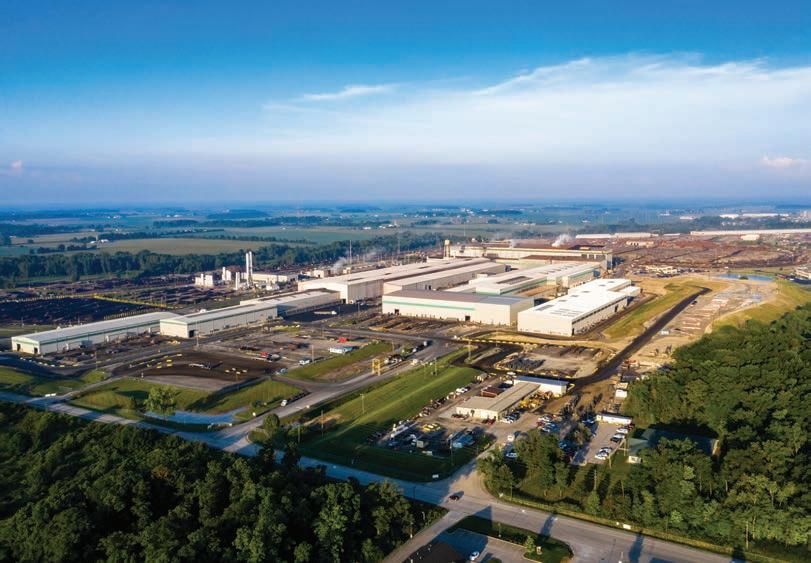

Our steel operations use recycled ferrous scrap as their primary raw material in the production of high-quality steel and source much of their scrap needs from our own metals recycling operations. This benefits our steel mills with lower cost, higher quality recycled raw materials and lower working capital requirements. Our diverse steel products are then used in numerous end markets, including in our own downstream manufacturing and steel fabrication businesses. This optimizes our companywide, through-cycle profitability through the option to source steel internally in weaker demand environments to achieve higher steel mill utilization and externally in strong demand environments.
Finally, as steel and other finished goods reach their end of useful life, our metals recycling operations collect and process these items—once again reintroducing nonferrous and ferrous recycled materials into the production life cycle. We also design, install, and manage customized scrap management programs for numerous manufacturing companies throughout North America, thereby helping customers become more sustainable as well.
33M 3.1B
83% 70%
Tons of ferrous scrap reintroduced into the manufacturing life cycle from 2019 to 2021
Pounds of nonferrous scrap reintroduced into the manufacturing life cycle from 2019 to 2021
Of the material used in our steel mills was recycled ferrous scrap and internally produced iron
Of the recycled ferrous scrap utilized in our steel mills is sourced from within 250 miles
We
Make the Steel Required for a Sustainable Future
Steel is the most recycled material in the world, and we are the largest North American recycler of ferrous and nonferrous scrap. American steel production is governed by stringent environmental regulations, and EAF production is the steel technology that generates the lowest greenhouse gas emissions as compared to other commercially available methods. The steel industry is vital to a healthy manufacturing base and sustainable infrastructure. Steel is essential to connect our energy grid and utilities, and to build roads, bridges, automobiles, hospitals, schools, and businesses. To achieve a lower-carbon economy, consumers must buy EAF steel and other manufactured goods that are made in America.
With our EAF steelmaking, circular manufacturing model, and innovative teams, Steel Dynamics is already a leader in the production of lower-carbon steel products within the global industry.
Our steel mills’ Scope 1 and 2 combined GHG emissions intensity is the lowest among all the global steel companies Transition Pathway Initiative tracks and shares for the sector.
Environmental Goals and Progress
In 2021, we announced that we are taking further action to reduce our environmental footprint through our 2025, 2030, and 2050 goals for greenhouse gas (GHG) emissions reduction and increased renewable electrical energy usage.
CARBON
BY
› 20% reduction in our steel mills’ Scope 1 and Scope 2 combined GHG emissions intensity by 2025
› Increase our steel mills’ use of renewable electrical energy to 10% by 2025
› 50% reduction in our steel mills’ Scope 1 and Scope 2 combined GHG emissions intensity by 2030 1
› Increase our steel mills’ use of renewable electrical energy to 30% by 2030
Our steel mills to be Carbon Neutral by 2050

WITH THE ADDITION OF OUR DECARBONIZATION GOALS, WE ARE RAISING THE BAR EVEN FURTHER FOR SUSTAINABLE STEELMAKING. WE PRODUCE THE STEEL REQUIRED FOR A SUSTAINABLE FUTURE.
Performance
We have already made meaningful progress to meet these decarbonization goals. Since 2018 (our baseline year), we have reduced our steel mills’ Scope 1 and 2 GHG emissions intensity by 15%, and we have increased our use of renewable electrical energy to 11% within our steel mill operations, already achieving our 2025 renewable energy goal.
To achieve carbon neutrality at our steel mills, we plan to continue working to:
l Identify and implement emission reduction projects
l Improve energy management to reduce emissions and enhance operational efficiency
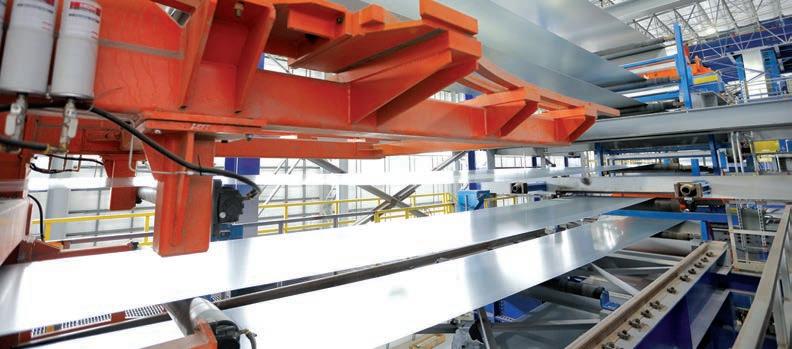
l Increase the use of renewable energy, including partnering with our utilities
l Research, develop, and implement innovative technologies
15%
Reduction Since 2018
11% Use of Renewable Electricity in 2021
Our entrepreneurial, innovative, performance-based culture supports our decarbonization efforts through the continuation of EAF steelmaking technology development, the identification of lower-carbon raw material alternatives, and increased operating efficiency initiatives.
While we believe we operate some of the most efficient steel operations in the world, we recognize the need for continuous improvement. Our teams are constantly challenging the status quo through innovation to be more efficient. The framework within our performance-based compensation programs also supports this initiative. In 2021, we also engaged with a third-party engineering firm to work with our steel teams to identify additional opportunities for energy efficiency and greenhouse gas emissions reduction projects.
SDI Biocarbon Solutions represents a significant step forward on our path to carbon neutrality at our steel mills and our continued commitment to reduce our impact on the environment.
In 2022, we announced SDI Biocarbon Solutions, a strategic investment to meaningfully reduce our Scope 1 GHG emissions through our partnership with Aymium, a leading producer of renewable biocarbon products. This investment represents a significant step toward the decarbonization of our steel mills. We plan to build our first biocarbon production facility to provide a renewable product alternative to anthracite used in our steelmaking operations, which could result in as much as a 35% reduction in our steel mills’ Scope 1 GHG emissions. Aymium’s proprietary non-combustion process converts sustainability sourced biomass into high-purity biocarbon. The initial facility’s production capability is expected to be 228,000 metric tons of biocarbon per year, and will represent nearly all of our steel mill requirements for anthracite. The facility is planned to begin operations early in 2024.
Involved Leadership
Our decarbonization strategy is integral to our overarching sustainability program to address climate-related considerations. Our Board of Directors provides oversight concerning the company’s sustainability strategy, disclosures, and climate-related strategy. Our senior leadership, including our Chief Executive Officer, Chief Financial Officer, operating platform senior executives, and Vice President of Environmental Sustainability establish our near- and long-term strategies related to our decarbonization assessments, goals, and programs.
We have environmental professionals throughout our company, including at each of our steelmaking locations, who are responsible for regulatory compliance and helping with decarbonization initiatives. All significant capital investment decisions are reviewed by both our safety and environmental professionals for insight and approval. The environmental team shares current developments, environmental trends, best practices, and opportunities for continuous improvement.
In 2020, we established our Core Environmental Group (CEG), a multi-disciplinary team representing all of our operating platforms, to drive environmental sustainability initiatives across the company. The CEG is a part of the environmental sustainability organization that reports through our Vice President of Environmental Sustainability to our Chief Financial Officer, and consists of members from senior leadership, operational leadership, and other electrical, environmental, mechanical, and metallurgical engineering disciplines. This team, in combination with our senior leadership, is tasked with guiding our companywide GHG emissions reduction efforts and allocation of resources to these efforts, among other responsibilities.
Innovation
We empower our teams to make decisions and provide innovative solutions in all areas. We believe this entrepreneurial culture will provide meaningful benefits to our decarbonization efforts as well. As part of its charter, the CEG works in close collaboration with environmental, energy, and sustainability professionals to help guide our efforts by identifying and evaluating potential initiatives, discussing these ideas with senior leadership, and assessing the eventual performance of projects.
Accountability and Performance Transparency
Our sustainability and decarbonization strategy is an ongoing journey, and we are moving forward with the intention to have a positive impact and succeed. We issued our inaugural sustainability report and related disclosures in 2018. Since our initial report, we have continued to broaden our disclosures and announced our decarbonization goals. In this report, we have further expanded our discussion concerning our ongoing sustainability efforts and our progress toward achieving our decarbonization goals. We have utilized the GRI and SASB disclosure frameworks, as well as elements of TCFD. We also submitted our response to CDP’s Climate Change questionnaire earlier this year, and it can be found on our website at steeldynamics.com under “Sustainability Reporting.”

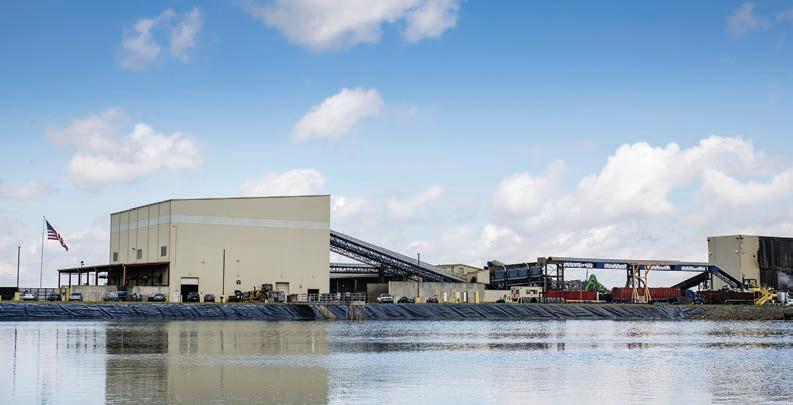
2021 SUSTAINABILITY REPORT | ENVIRONMENT
In 2022, we helped found the Global Steel Climate Council (GSCC), an international coalition of steel producers and other stakeholders spearheading the steel industry’s efforts toward reducing emissions. The GSCC is a nonprofit association organized to advance climate strategy by sharing best practices, establishing standards, and advocating for carbon emissions reductions by members of the steel industry. GSCC’s focus is to reduce actual greenhouse gas emissions from the global steel industry by supporting reduction methods that are technology agnostic, have a system boundary that includes Scope 1 and 2, and certain Scope 3 GHG emissions, and align with a science-based glidepath to achieve a 1.5-degree Celsius scenario by 2050.
We urge steel customers, investors, and other relevant decision-makers to visit globalsteelclimatecouncil.org to learn more about the GSCC’s mission and the positive impact it could have on the global steel sector decarbonization efforts.
We plan to continue to address decarbonization issues and to play a leadership role in developing innovative ways to reduce our carbon impact.
Greenhouse Gas Emissions
Our EAF steel mills are the primary source of our companywide greenhouse gas emissions. Exclusively using EAF steelmaking technology, we generate substantially fewer GHG emissions than those generated from traditional blast furnace technology, which creates significant emissions through the conversion of iron ore, coke, and coal into steel. During 2021, our steel mills generated only 12% of the Scope 1 GHG emissions, on a per metric ton basis, of average United States blast furnace steelmaking operations.¹
Our 2021 steel mills’ Scope 1 and 2 combined GHG emissions intensity decreased 15% compared to our 2018 baseline. Our Scope 1 and 2 reductions are attributed to energy efficiency, our empowered teams, lower-carbon energy consumption, and renewable energy certificates (RECs).
We have expanded our greenhouse gas emissions disclosure to include our steel mills’ Scope 3 emissions and intensity. Our steel mills’ Scope 1, 2, and 3 combined emissions intensity is 58% lower than average steel operations worldwide, when compared to data provided by the World Steel Association. Additionally, we expanded our greenhouse gas emissions disclosures to include companywide Scope 1 and 2 emissions.
We recognize that reducing GHG emissions is important to our numerous constituents, including local communities and our team members. We endeavor for continuous improvement in decarbonization, while maintaining compliance with regulated emission limits. We evaluate our GHG emissions by regularly reviewing furnace performance and efficiency. We analyze the latest available technologies to also determine whether emissions can be further lowered. We continue to engage with our electricity suppliers to advance and advocate for renewable and clean energy sources within our existing grid systems.
Steel Dynamics Steel Mills’ Scope 1, 2, & 3 GHG Emissions2 Intensity 2021
1.91
Steel Dynamics Companywide GHG Emissions2, 4 2021 (t CO2e)
t CO2e
Scope 1: 2,492,330
Scope 2: 2,222,771
0.81
Scope 1: 0.20
Scope 2: 0.22
Scope 3: 0.39
Steel Dynamics Steel Mills’ GHG Emissions2 2021 (t CO2e)
Total
Global Steel Industry Average3 Total Steel Dynamics Steel Mills Global Steel Industry Average


¹ Based on 2020 Scope 1 CO₂ equivalent emissions reported to the U.S. EPA.
² 2021 Steel Dynamics companywide Scope 1 and Scope 2 emissions and Steel Dynamics steel mills’ Scope 1, 2 and 3 emissions data were verified by a third party in accordance with ISO 14064-3:2019.
³ World Steel Association.
4 All sites for which Steel Dynamics has operational control have been included in this companywide assesment.
t CO2e
Scope 1: 1,860,789
Scope 2: 1,964,822
INDUSTRIAL GASES SUPPLIED TO OUR SINTON STEEL MILL ARE PRODUCED USING RENEWABLE ENERGY.
Energy
Our EAF steel mills require large amounts of electricity and chemical energy, such as natural gas, to melt ferrous materials and transform metal into high-quality finished steel products. Our energy requirements to produce steel present opportunities for further decarbonization. As a percentage of our total costs to manufacture steel, electricity generally represents approximately 4% and natural gas represents approximately 1%.
By connecting the casting and rolling processes in our flat roll steel mills, we roll slabs into steel coils while the steel is still hot, requiring significantly less energy compared to traditional blast furnace technology, which typically requires reheating slabs before rolling. In 2021, our EAF steel operations, on a per metric ton basis, required only 23% of the energy intensity of average steel operations worldwide, when compared to the World Steel Association.
As a major consumer of power, we seek to maximize energy efficiency throughout our operations to reduce costs and absolute energy usage. We regularly review detailed energy usage and costs at each steelmaking location, including the total energy required to produce a ton of steel. Our operational leaders and subject matter experts share best practices related to energy conservation, including new technologies and processes. We believe these efforts lead to tangible continuous improvement in energy efficiency.
Our steel mills are located in various states throughout the United States, and each state has unique laws concerning power generation and sourcing. We source our electricity from multiple providers and they have some portion of their generation from lower-carbon energy sources, including renewables and nuclear. In 2021, approximately 53% of the electricity used at our steel mills was derived from lower-carbon power sources (primarily nuclear, wind, and hydroelectric). For purposes of our renewable electricity goals, we are only counting the renewable electricity for which we own the environmental attributes.
INTENTIONALLY SUSTAINABLE
In 2021, our percentage of renewable electricity increased to 11% of the total amount of electricity consumed in our steel mills when compared to our baseline year (2018).
Innovation Highlights
l The team installed a static synchronous compensator, or STATCOM, at our new Texas steel mill to reduce energy use, while also reducing costs. This equipment is typically used in power distribution facilities to maintain consistent voltage levels. This installation represents the first time a STATCOM has been used in an EAF steel mill environment.
l We implemented furnace optimization practices at our Columbus Flat Roll Division in 2018. Based on that success, we began similar furnace optimization practices at our Structural and Rail Division in 2020. Through the implementation of these practices at our Structural and Rail Division, we conserved 32,000 megawatt hours of electricity during 2021. That is enough energy to power approximately 3,000 homes each year. In addition to the energy savings, these systems create a safer work environment, as the furnace can automatically react to any instability or inconsistency. Also, more consistent operation of the furnace reduces the wear rates on certain components, lessening maintenance costs.
These projects were driven by our team members and are a testament to the resourcefulness and ingenuity of our team.
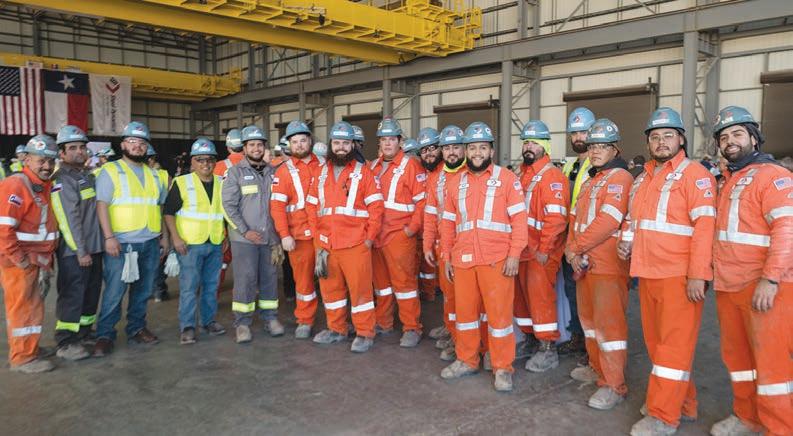
BEGINNING IN 2022, OUR SINTON STEEL MILL WILL RECEIVE 100% OF ITS ELECTRICAL POWER FROM LOWER-CARBON SOURCES (NUCLEAR).
2021 SUSTAINABILITY REPORT | ENVIRONMENT Water
We recognize our responsibility to understand the environmental impacts our operations may have on natural resources, including water. We withdraw water for use as both contact- and noncontact-cooling sources in our steel mills, where cooling is necessary to provide high-quality steel products and protect manufacturing equipment from excessive heat. We also use water to apply cleaners to products before further processing on our value-add steel production lines, such as our galvanizing or painting lines, to ensure product quality.
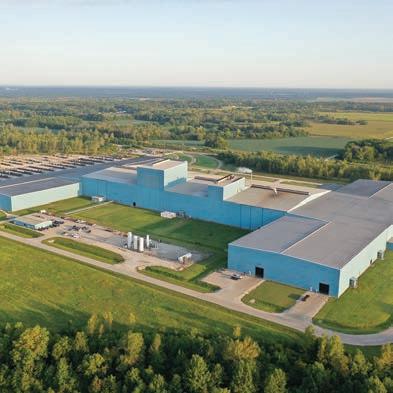
97% of the total water withdrawn by our steel mills is from regions identified as having low water stress.¹ We understand the impact our operations may have on the water supply at the local level and have implemented water withdrawal best practices to reduce any impact. To evaluate the amount of water withdrawn, the water wells utilized for our production processes have flow meters, and the results are directly communicated to our teams. The results are also included in an annual report to designated state regulatory agencies where applicable. We also utilize water reuse programs at our steel mills, which are designed with cascading water systems to continually reuse withdrawn water. Water from noncontact water systems is reused in other noncontact water systems or in contact water systems.
Biodiversity
We recognize that conserving biodiversity and the ecosystems that support it are fundamental to environmental sustainability. In our shared environment with increasing pressures on indigenous plant and animal species, we are mindful of operating in a manner designed to lessen any impacts to biodiversity. By their very nature, EAF steelmaking operations help to preserve natural resources relative to traditional blast furnace steelmaking by recycling steel scrap and other materials for reuse. EAF steelmaking also lessens the need for raw materials to be sourced from land-disturbing mines. By consuming fewer virgin raw materials, more undisturbed natural habitat is available for fostering biodiversity. Steelmaking within the United States is governed by numerous environmental laws protecting the environment, thus our operations present a significantly lower threat to biodiversity than operations would in many other parts of the world with fewer protections in place.
Based on our review, we do not believe that any of our operational sites are located in, or adjacent to, sites that the GRI 304 Biodiversity standard would describe as protected areas, or areas of high biodiversity value.
While new or expansion projects do normally involve some land disruption, they are primarily during construction and are of relatively short duration in ecological terms. Our facilities are generally located in developed urban areas, or in suburban and rural settings where the prior property owners had already disturbed the land for agricultural, ranching, commercial, or similar uses. Thus, the potential impacts to biodiversity from constructing new facilities are believed to be low. Completely natural sites without developed utilities, roadways, and other infrastructure are generally not suitable for our operations.

OUR EAF STEEL OPERATIONS RECYCLED AND REUSED 100% OF WATER WITHDRAWN IN 2021. IN FACT, THE AVERAGE GALLON OF WATER WAS RECYCLED AND REUSED MULTIPLE TIMES BEFORE IT WAS LOST EITHER TO EVAPORATION OR DISCHARGE.
Waste
Our EAF steel mills generate various nonhazardous and some hazardous wastes in the steelmaking process. We follow strict procedures for how wastes are handled, disposed of, or recycled.

One way we take extra measures to responsibly manage our hazardous waste stream is by diverting EAF dust from landfills to either our own zinc recovery facility, or other third-party vendors. During 2021, we redirected over 99% of our EAF dust in this manner to be recycled.
To minimize disposal of other byproducts of the manufacturing process, we assess what materials are considered reusable and, where feasible, redirect those materials to be reused or recycled versus sent to a landfill. We continually look for ways to minimize waste generation and the costs associated with nonhazardous and hazardous wastes. Our facilities share best practices for reducing waste. Most of our steel mills have implemented single-stream recycling for qualifying materials. We also partner with companies to make slag or furnace stone available as a valuable commodity for reuse.
Our performance-based incentive programs reward team members for reducing waste and increasing efficiency, while also producing quality products for our customers. Our teams continually innovate ways to better manage waste streams.
Other Emissions: Nitrogen Oxides, Sulfur Dioxide, Other
Our EAF steel mills are the primary source of our air emissions. Routine testing of air emissions and frequent monitoring of our operations give us the ability to monitor the production of our high-quality steel products. This emission information is submitted regularly to regulators.
Our air emissions are frequently managed by control devices with permitted Best Available Control Technologies—baghouses capture particulate matter (PM), natural gas-fired burners are designed to reduce nitrogen oxide (NOx) emissions, and thermal oxidizers control paint line volatile organic compounds, among other control devices. We implement state-of-the art air pollution control practices designed to meet a variety of different emission limits in facility air permits. We are committed to reducing our steel mills’ impact on air quality of surrounding communities and understand our responsibility to maintain compliance.
2021 Emissions (Pounds / Liquid Steel Ton)
0.29 0.20 0.16
Environmental Management
Our Butler Flat Roll and Columbus Flat Roll divisions’ environmental management systems are certified with the International Organization for Standardization 14001. These locations represent 55% of our 2021 steel production. Each of our EAF steel mills has an onsite environmental engineering group focused on emissions, regulatory compliance, and continuous improvement; these teams and our team members are knowledgeable in responsible environmental practices.
Environmental Stewardship
As we continue down the path of strategic growth, we recognize that being a good steward of our environment and the communities where we work and live is essential. We are members of the communities where we operate and want to ensure that we are a responsible, contributing influence. As we evaluate opportunities for growth, we also evaluate opportunities to improve our processes, equipment, and technology to reduce our impact on the environment. With all new projects, we not only evaluate strategy and financial returns, but we also assess safety considerations and the environmental impact.
Physical Structures
VALUING COMMUNITIES
We strongly believe in making a positive impact on our communities through supporting organizations in which our team members are involved. We empower and encourage our teams to volunteer and take leadership roles in these critical community organizations. We collaborate with our teams and communities to determine areas of need and to identify those organizations that most effectively provide current and longterm solutions to address those needs. Among other areas, this has included financial support for human services organizations, educational institutions, and community programs. We are proud of, grateful for, and humbled by the generosity of our teams.
We encourage and empower our teams to identify and support those organizations that have the most expansive and enduring positive impact in their geographic regions. Those organizations may receive company-generated donations or be awarded a grant from the Steel Dynamics Foundation. We want to enrich quality of life and assist those in less fortunate circumstances, especially through education and economic empowerment.
Higher Education
We believe an educated population creates a stronger economy with higher living standards and increased opportunities for everyone, including those in need of assistance. Our contributions to higher education include supporting campus expansion projects, STEM programs, scholarship opportunities, and educational equipment at all levels of education, including high school, skilled labor, and postsecondary organizations.
l Academic engineering center
l Advanced manufacturing training center
l Alternative energy labs

l Student activities facilities
l Classroom facilities
INTENTIONALLY SUSTAINABLE
Student Support
l Scholarships for students studying science, technology, business, engineering, metallurgy, etc.
l Forgivable loan program to incentivize students’ achievement
l Post-secondary education scholarship program for team members’ children
Program Support
l Collegiate-based entrepreneurship/ innovation center
l STEM/skilled trades program support and development
l Educational equipment and environmental research
Sustainable Future
Our support of these initiatives is a way to help individuals improve job-related skills. In addition, this contributes to a sustainable, skilled workforce, which is a critical component of attracting and retaining businesses that provide high-quality jobs.

In 2021, Steel Dynamics received the American Technical Education Association’s highest partnership award, the Silver Star of Excellence Award, for their long-term partnership with Ivy Tech Community College Fort Wayne and Warsaw.
Our Stories
Supporting Higher Education
We are a proud sponsor of the Northeast Indiana Federation for Advanced Manufacturing Education (FAME) program. We spearheaded the initiative to bring FAME to Northeast Indiana in 2020 to help provide opportunities for local students, while also increasing the critically important skilled labor talent pool. This program connects area high school students desiring a career in advanced manufacturing with businesses that provide related scholarships. These students are offered an opportunity to earn a two-year degree in Industrial Technology, while also being compensated to work with local companies.
Human Services
We support human services organizations in our communities to improve quality of life and promote social and economic mobility. We contribute to services that support individuals with immediate needs, and those that provide education and resources that can be used by individuals to sustain themselves in the future.
Support of Immediate Needs
l Transportation for the disabled
l Programs and facilities for children and adults with disabilities
l Cancer and other health-related support services
l Food distribution donations and fundraising
l Need-based fundraising
Supporting Food Distribution
As students were preparing for summer break, one of our divisions was busy helping with their local “Pack it Back” program. Backpacks were filled with food for children that rely on the school system to ensure they receive needed meals. Three trucks were loaded with backpacks filled with food for the local community.
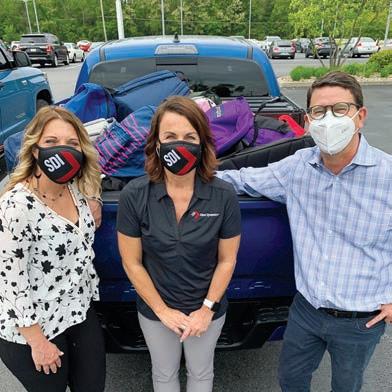

Spreading Holiday Cheer
We engage with our communities even more during the holiday season by participating in numerous need-based programs throughout our communities. During the 2021 holiday season, one of our divisions participated in its community’s annual Christmas Adopt-a-Family program, providing gifts for over 20 families in need.
Support of a Sustainable Future
l Mentoring for at-risk children
l Reading programs
l Programs that encourage youth entrepreneurial and business achievement
As we help build a solid foundation for youth in our communities, they become better equipped to sustain a higher-quality life and contribute to others in the future.
Supporting Restorative Care
Our contribution to the funding of a new facility for the homeless allows for men, women and children experiencing crisis to receive restorative care. The new building offers space for comprehensive programming for the Fort Wayne Rescue Mission’s clients for education and training, supporting efforts to assist clients in achieving housing stability.

Supporting Youth Career Development
Our contribution of two buses to The Boys & Girls Clubs of Fort Wayne will provide transportation to the new Career Pathway Center. The Career Pathway Center’s programming will focus on developing students’ basic skills, exposing them to various industries, and engaging them in career awareness experiences, specifically in skilled trades and manufacturing.
For the tenth straight year, Steel of West Virginia and our team members have been the largest contributor to the United Way of the River Cities (UWRC). The UWRC recognized their contribution by awarding them the 2021 Visionary Partner and Large Business of the Year awards. Across our company, we appreciate and support the work of the United Way in our communities.
INTENTIONALLY SUSTAINABLE
Community Development
A thriving community is the basis for economic growth, prosperity, and personal wellbeing. We support the development of communities to enrich the lives of individuals, their families, and future generations. Building better communities attracts business and high-quality career opportunities, which in turn improves lives.
Support of Immediate Needs
l Local community events and festivals
l Capital campaigns to build community assets and increase services
l Arts and culture programming
Support of a Sustainable Future
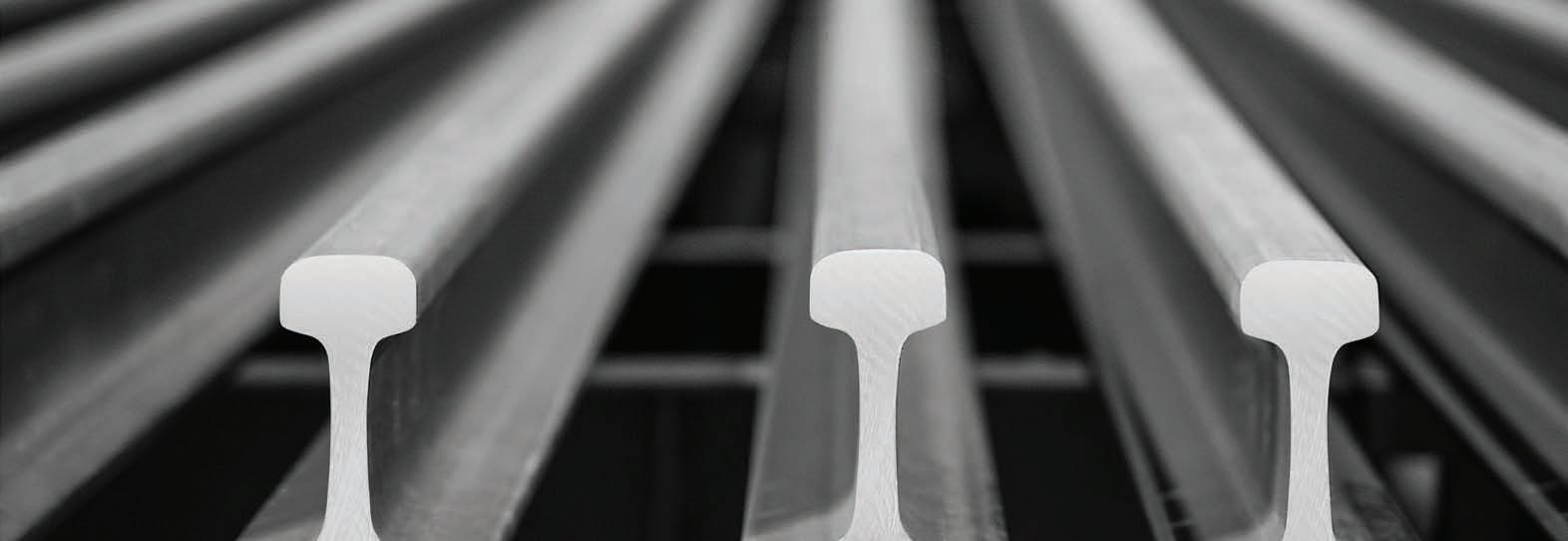
l Local events to focus on educating and building momentum for community development projects
l Seed money to help nonprofit organizations create revenue-generating programs
We help communities grow and sustain their vitality well into the future.
Our Stories
Community Development
We support Turnstone, a regional center for children and adults with disabilities, whose mission is to empower people with disabilities to achieve their highest potential, by providing comprehensive services and programs. Our contributions support their future through current and expanding programming.
Community Development
Our support of Elevate Ventures helps build sustainable entrepreneurship cultures in Indiana, through fostering and developing high-potential, high-growth businesses.
GOVERNING PRINCIPLES
Board of Directors
Our business affairs are managed under the direction of our Board of Directors. The role of our Board of is to effectively govern the company for the long-term benefit of our teams, customers, vendors, communities, and stockholders. Our Board of Directors has three standing committees that function under individual charters and consist of solely independent directors. The committees consist of an Audit Committee, a Compensation Committee, and a Corporate Governance and Nominating Committee.
Our Board of Directors values diversity of background, experience, gender, and ethnicity in order to optimize the benefits it brings to the senior leadership team and ultimately to everyone impacted by our business. The Board utilizes a matrix when evaluating the skillsets of both existing directors and potential new directors. This matrix takes into account such factors as subject matter expertise, gender and ethnic diversity, insight into our long-term strategic direction, time availability, board tenure, age, and membership on other public company boards.
The independent lead director and chairperson of our Corporate Governance and Nominating Committee also facilitate an annual performance assessment of both the Board as a whole and each individual director to ensure the Board’s effectiveness.
2
Of Directors are Independent/All Committee Members are Independent 2021 SUSTAINABILITY REPORT | COMMUNITIES
Directors are Female; Two Directors are Ethnically Diverse Average Tenure for Independent Directors
73%
Best Practices
The Board of Directors is also responsible for ensuring that our business activities are conducted in a responsible and ethical manner. We are committed to strong foundational principles of corporate governance, which promote the long-term success of our business. As governed by our Corporate Governance Policies, all Board committee members must meet both objective and subjective independence standards, and a majority of our Board members must also be determined to be independent, including the Lead Independent Director.
The following highlights additional key Board attributes:
Lead Independent Director Board refreshment – Director Retirement Policy
Ongoing Board and company leadership succession planning and talent development
Independent directors meet at least quarterly in executive session
Code of Business Conduct and Ethics
Diverse director backgrounds and perspectives, combined with seasoned industry knowledge
Robust stock ownership guidelines for directors and executive officers (6% of our common stock is beneficially owned by this group at Q3 2022)
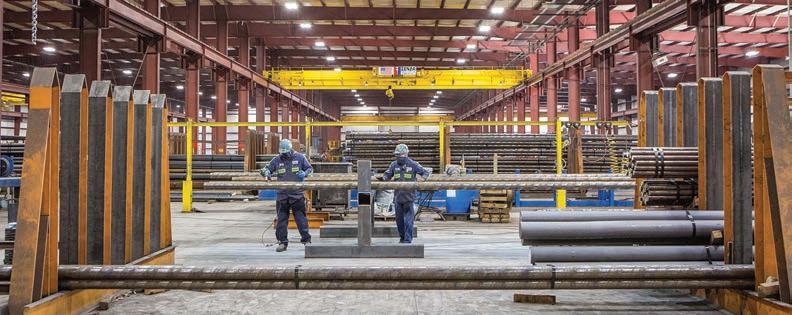
All Board members attended at least 75% of Board and committee meetings
All directors stand for election annually
Board committees consist of 100% independent directors
Annual Board evaluation, including individual director assessment
Risk Oversight
The Board of Directors has responsibility for risk oversight and focuses on the most significant risks facing the company. The Board discharges its risk oversight responsibilities, in part, through delegation to the senior leadership team and to Board committees, facilitated through both a top-down and bottom-up communication structure. In this regard, the Board believes that evaluating the senior leadership team’s management of the various risks confronting the company is one of its most important areas of oversight. In carrying out this critical responsibility, the Board, with senior leadership’s assistance, regularly reviews the company’s significant macroeconomic and business-specific risks, including but not limited to: health and safety, talent development, human resources, diversity and inclusion, financial, operational, information and cybersecurity, business continuity, legal, environmental, decarbonization, trade, supply chain, technological and regulatory exposures.
While the Board and its committees oversee risk management strategy, the senior leadership team is responsible for implementing and supervising its execution, and reporting to the Board and its committees on such matters. The senior leadership team regularly provides the Board with information on the most potentially significant risks facing the company and the plans to mitigate these exposures where possible. In this regard, the Board reviews and challenges the steps leadership has taken to actively assess, manage, monitor, and mitigate areas of exposure. Outlined below are the key areas of responsibility for each of the committees and how the Board and senior leadership team support each other in this critical function.
Audit Committee
l Reviews the company’s risk management processes, systems, and controls that leadership has established.
l Reviews the risks related to financial reporting and disclosure processes, as well as capital structure, cybersecurity and information technology, liquidity sufficiency, financial regulatory compliance, and market trends.
l Discusses significant financial risk exposures with leadership to ensure adequate mitigation.

Corporate Governance and Nominating Committee
l Reviews legal and regulatory compliance risks related to, among other things, corporate governance practices and processes.
l Reviews risks related to environmental, climate, and social matters, including the impact our operations have on our communities, our environment, and the diversity within our teams.
l Provides oversight of the company’s sustainability strategy and performance, specifically related to decarbonization and the company’s disclosures and progress related to its goals.
Compensation Committee
l Reviews our compensation programs to ensure appropriate performance-based metrics that are aligned with the company’s overall strategy, and that do not encourage unnecessary or excessive risk-taking.
l Evaluates a number of environmental, social, and safety initiatives for potential inclusion as performance-based incentive metrics to align with the company’s sustainability goals.
Ethical Behavior
We believe that every team member contributes to the company’s culture of excellence, not only through efficiency and innovation, but also through personal integrity.
Our Code of Business Conduct and Ethics (the Code) sets a foundation for the highest level of integrity and permeates everything we do. The Code articulates the fundamental aspects of our commitment to always act with integrity and to promote ethical and lawful conduct in every aspect of our interactions. The Code is also part of a larger framework that includes expectations for adherence with all of our corporate and business policies, and the existence of open, transparent communication between all team members and leadership, as well as with other stakeholders, including customers, suppliers, and shareholders. Ethical business and personal conduct are part of the foundation upon which we operate, and we expect each team member to exercise integrity and good judgment every day.
We also operate under a separate Code of Ethics for Principal Executive Officers and Senior Financial Officers—which is reviewed and signed annually by senior leadership—that provides principles to guide individuals to promote ethical behavior and compliance with laws and regulations.
Ethics Line
Our team members may raise confidential, anonymous complaints regarding possible violations of our Code of Business Conduct and Ethics, other claims of financial irregularities, fraud, or any other matters. Complaints submitted through this confidential process are communicated directly to the Board’s Audit Committee chairperson, external legal counsel, and internal legal counsel. Depending upon the allegations made, this group, along with members of senior leadership, will ascertain the appropriate method for investigation and any subsequent actions to be taken (if required). These matters are taken very seriously.
Federal law and company policy protects anyone from unlawful discrimination or retaliation by the company as a result of lawful reporting of information, or participating in any investigations involving possible violations of any matter through this Ethics line process.
Policies and Charters
We operate under corporate governance principles and practices that are reflected in a set of written policies. Our policies and charters are reviewed regularly, amended as needed, and are available on our website at steeldynamics.com under Investors, Governance.
Corporate Policies
l Corporate Governance Policies
l Code of Ethics for Principal Executive Officers and Senior Financial Officers
l Code of Business Conduct and Ethics
l Policy Governing the Receipt, Retention, and Treatment of Complaints
Committee Charters
l Audit Committee Charter
l Statement of Policy for the Review, Approval, or Ratification of Transactions with Related Persons
l Environmental Policy
l Supplier Code of Business Conduct
l Political Contributions and Advocacy Report
l Human Rights Policy
l Conflict Minerals Policy
l Corporate Governance and Nominating Committee Charter
l Compensation Committee Charter
TCFD 09

Global climate change concerns have initiated a transition toward a lower-carbon economy. We routinely assess both the risks and opportunities related to transitioning to a lower-carbon economy. Based on comprehensive discussions with numerous constituents concerning the most useful methods to disclose certain related information, we are expanding our sustainability reporting to include Task Force on Climate-related Financial Disclosures (TCFD). This report reflects our response to the recommendations of the TCFD for 2021. This report discloses how we incorporate climate-related risks and opportunities into our governance, strategy, risk management, and metrics and targets.
Governance
Board’s Role
Our business affairs are managed under the oversight of our Board of Directors. The role of our Board of Directors is to effectively govern the company for the long-term benefit of our teams, customers, vendors, communities, and stockholders. The Board of Directors has responsibility for risk oversight and focuses on the most significant risks facing the company. The Board discharges its risk oversight responsibilities, in part, through delegation to the senior leadership team and to Board committees, facilitated through a top-down and bottom-up communication structure.
The Board meets at least quarterly and discusses decarbonization risks and opportunities presented by senior leadership, including strategy for related capital allocation decision-making. These discussions include reviewing targets, progress against targets, and major capital projects required to achieve the company’s targets. The Board approves annual capital allocation plans, which include contemplated efficiency, growth, replacement, safety, and decarbonization projects.
The Corporate Governance and Nominating Committee regularly reviews the Board’s composition to assess director skills, contributions, and experiences, and for the purpose of identifying potential new candidates for Board membership, Board refreshment, retirements, or unanticipated vacancies. Among other things, as part of the director candidate qualification process, the committee takes into account various factors such as particular industry and general business knowledge, operating experience, demonstrated ethical business conduct, familiarity with or experience regarding business matters, exposure to public company governance matters, diversity of experiences and backgrounds, and other considerations such as experience in safety, logistics, regulatory matters, information technology, and risk assessment. The Board currently has 7 of the 11 directors with selfidentified health, safety, and/or environmental expertise. Additionally, all Board members are educated routinely on decarbonization and renewable energy initiatives through presentations from our senior leadership and outside experts. Our leadership is educated through numerous means, including but not limited to, external consultants, external counsel, trade groups, various subject matter experts, secondary education, and our internal Core Environmental Group (CEG).
The Board of Directors’ Corporate Governance and Nominating Committee is the Board-level committee providing specific primary oversight of climate-related issues, including the related legal and regulatory risks. The committee is also responsible for the oversight of our sustainability performance, including decarbonization, renewable energy consumption, and inclusion and diversity, among other related matters. The company frequently reports to the committee on related initiatives, status, and performance. The committee provided insights, challenges, and guidance as we established decarbonization goals announced in July 2021, and as we make related capital allocation decisions. The committee reports to the Board chair and full Board regarding these matters.
Committee meetings are held at least quarterly and among other governance matters, discussions also include items related to decarbonization, renewable energy consumption, and other topics that are relevant to the company’s decarbonization strategy. Current trends in decarbonization, regulatory updates, and shareholder engagement are among the topics that the committee monitors. The committee, in discharging its duties, receives reports from our senior leadership team and consultants on decarbonization, renewable energy, and other related matters.
See our current Proxy Statement for additional information related to the company’s governance, including Board structure and composition, Board member background and skills, committee responsibilities and composition, and the Board’s and committee’s roles in risk oversight.
Management’s Role
The senior leadership team is responsible for managing and assessing environmental risks and opportunities. Our Executive Vice President, who is also our Chief Financial Officer, and our Vice President of Environmental Sustainability are the primary carbon-mitigation champions within the company driving decision-making for decarbonization initiatives. The senior leadership team provides periodic reports on decarbonization initiatives to the Corporate Governance and Nominating Committee. In turn, the committee and senior leadership team provide related information to the full Board based on these discussions, discussing how these initiatives will impact our strategic direction.
There are two groups that directly support the assessment and management of environmental risks and opportunities. The Core Environmental Group (CEG) is responsible for identifying, reviewing, and recommending projects and capital investments to drive improvement toward our decarbonization goals. The CEG is a crossfunctional team consisting of members of senior leadership, operational leadership, environmental engineers, and other subject matter experts in the fields of environmental regulation and renewable energy, with representation from all of our operating platforms. The Decarbonization Working Group drives quality sustainability disclosures and reporting, as well as suggestions for new related policies, educational protocols, and commercial support for our sales teams. The group is comprised of a cross-functional team, including environmental and operating engineers, sustainability professionals, and individuals from investor relations, treasury, risk management, financial accounting, and legal. The CEG and Decarbonization Working Group report through our Vice President of Environmental Sustainability to the Chief Financial Officer.
Within our steel operations, local leadership is responsible for developing and implementing strategic annual decarbonization plans to identify, implement, monitor, and measure decarbonization projects where feasible. The CEG members are key drivers of these efforts with support from all levels within the company, including senior leadership, divisional operating management, and environmental engineers.
Strategy
Climate-Related Risks and Opportunities
We define our climate-related time horizons by the following categories:
Short Term Medium Term Long Term
1–3 Years 3–10 Years 10–30 Years
Transitional Risks: Policy and Legal
Emerging Regulation: Mandates on regulation of existing products and services
Description: Increased costs of raw materials, reduced availability of raw materials, and/or temporary or permanent interruptions in our supply chain
Time Period:
Medium Term
Likelihood: More likely than not
Financial Implications and Impacts: Increased direct operating costs
Emerging Regulation: Carbon pricing mechanisms
Description: Carbon pricing mechanisms such as (1) Emission Trading System (ETS) (cap-and-trade system) to cap level of GHG allowed, or (2) tax on carbon emissions or carbon in fossil fuels
Time Period:
Medium Term
Likelihood: More likely than not
Financial Implications and Impacts: Increased indirect operating costs
Opportunities: Products
Development and/or expansion of lower-carbon emission products
Description:
Development and/or expansion of lowercarbon emission products. Further improve our competitive position to reflect shifting consumer preferences and demand for lower-carbon products that enable carbon reductions in the supply chain
Time Period:
Short term
Likelihood: Very likely
Financial Implications and Impacts: Increased revenues resulting from increased demand for products
Carbon pricing mechanisms
Description:
Carbon pricing mechanisms, potentially making EAFs more competitive against BOF/BF and imported steel. Improved competitive position reflecting shifting consumer preferences for lower-carbon emission products
Time Period: Medium term
Likelihood: Very likely
Financial Implications and Impacts: Increased revenues resulting from increased demand for products
Impact of Climate-Related Risks and Opportunities on the Business, Strategy, and Financial Planning Products
When determining the products we would like to produce, we have capitalized on the opportunity of consumer preference by producing lower-carbon steel through exclusive use of EAF steelmaking technology.
Supply Chain and Value Chain
Our vertically connected businesses provide numerous advantages, including a secure baseload of quality ferrous raw materials, which is our largest raw material input in the production of steel.
Aware of potential variations in the supply of utilized raw materials available, we continue to diversify our input options, as well as increase acquisition of those inputs from in-house processes, such as metals recycling operations.
Investment in Research and Development
We continually evaluate various projects that align with our decarbonization goals. We intend to invest in the development of lower-carbon products, which are growing in demand.
Operations
We examine ways to improve our operational efficiency and use of renewable energy, thus reducing our emissions per ton of steel produced and preparing for increasing materialization of the cost of carbon through consumer preference and potential regulation.
Financial Planning
We continually evaluate various projects that align with our decarbonization goals. We intend to invest in projects that will result in lower-carbon footprint products, which are growing in demand. As with all capital expenditures, decarbonization projects must be approved as a capital project and approved by the Board.
Financial Performance
For the reporting period, our financial performance has not been significantly impacted by climate-related considerations. Although our products are produced by a technology that generates relatively lower greenhouse gas emissions than many of our competitors, we have not yet experienced significant price premiums for such products. We have not had any material consequences from climate-related regulation or business trends. We have also not experienced any material weatherrelated damages to our property or operations, and we have not experienced a lack of availability, or a material increase in our insurance programs. Much like the financial performance, we have not realized any material change in our financial position due to climate-related issues. We continue to monitor for any changes or potential changes to our financial position.
GHG Emissions Reduction Commitments and Transition to a Lower-Carbon Economy
To manage our exposure to risks associated with a transition to a lower-carbon economy, we are undertaking efforts to improve on our already strong position in this area. In 2021, we set a goal for our EAF steel mill operations to be carbon neutral by 2050. To achieve this target, we also set interim emissions reduction and renewable electrical energy milestones to be achieved by 2025 and 2030.
On the path to carbon neutrality, we are targeting a 20% Scope 1 and Scope 2 combined GHG emissions intensity reduction across our EAF steel mills by 2025 and a 50% reduction by 2030 (compared to a 2018 baseline). Additionally, we plan to increase the use of renewable electrical energy for our EAF steel mills to 10% by 2025 and 30% by 2030.
To achieve carbon neutrality at our steel mills, we plan to continue working to:
l Identify and implement emission reduction projects.
l Improve energy management to reduce emissions and enhance operational efficiency.
l Increase the use of renewable energy, including partnering with our utilities.
l Research, develop, and implement innovative technologies.
Our entrepreneurial, innovative, performance-based culture supports our decarbonization efforts through the continuation of EAF steelmaking technology development, the identification of lower-carbon raw material alternatives, and increased operating efficiency initiatives.
While we believe we operate some of the most efficient steel operations in the world, we recognize the need for continuous improvement. Our teams are constantly challenging the status quo through innovation to be more efficient. The framework within our performance-based compensation program also supports this initiative. Further in 2021, we engaged a third-party engineering firm to work with our steel teams to identify additional opportunities for energy efficiency and greenhouse gas emissions reduction projects.
In 2022, we announced SDI Biocarbon Solutions, a strategic investment to meaningfully reduce our Scope 1 GHG emissions through our partnership with Aymium, a leading producer of renewable biocarbon products. This investment represents a significant step toward the decarbonization of our steel mills. For an estimated capital investment of $200 million, we plan to build our first biocarbon production facility to provide a renewable product alternative to anthracite used in our steelmaking operations, which could result in as much as a 35% reduction in our steel mills’ Scope 1 GHG emissions. Aymium’s proprietary non-combustion process converts sustainably sourced biomass into high-purity biocarbon. The initial facility’s production capability is expected to be 228,000 metric tons of biocarbon per year, and will represent nearly all of our steel mill requirements for anthracite. The facility plans to begin operations early in 2024.
Since we exclusively use EAF steelmaking technology in our steel mills, our GHG emissions are currently among the lowest in the industry. For at least the shortand medium-term, this primarily gives us market advantages and opportunities, and reduces the financial risks relative to many of our peers that utilize traditional steelmaking technologies.
As a leader in lower-carbon steelmaking, we will continue to engage with both governmental and NGO decision-makers regarding solutions that make sense for the decarbonization efforts of the global steel industry.

Resilience of Our Business Strategies to Climate-Related Risks and Opportunities
Steel is the most recycled material in the world, and we are the largest North American recycler of ferrous and nonferrous scrap. American steel production is governed by stringent environmental regulations, and EAF production is the steel technology that generates the lowest greenhouse gas emissions as compared to other commercially available methods. The steel industry is vital to a healthy manufacturing base and sustainable infrastructure. To achieve a lower-carbon economy, consumers must buy EAF steel.
With our EAF steelmaking, circular manufacturing model, and innovative teams, we are already a leader in the production of lower-carbon steel products within the global industry. With our decarbonization goals, we are raising the bar even further for sustainable steelmaking.
Based on International Energy Agency recommendations for the steel sector, our steel mills’ emissions intensity already falls within the 2050 intensity targets designed to meet the Paris Agreement and its 2°C scenario.
As part of our carbon mitigation strategy in the next two years, we anticipate including qualitative and/or quantitative climate-related scenario analysis and developing a lower-carbon transition plan.
Risk Management
Processes for Identifying, Assessing, and Managing Climate-Related Risks
The Board of Directors has overall responsibility for risk oversight and focuses on the most significant risks facing the company. The Board discharges its risk oversight responsibilities, in part, by receiving detailed reports from the senior leadership team and advisors and, as applicable, through delegation to its various committees, facilitated through both a top-down and bottom-up risk analysis structure. In this regard, the Board believes that evaluating the leadership team’s management of the various risks confronting the company is one of its most important areas of oversight. The Board reviews and challenges the steps that leadership plans to take or has taken to actively assess, manage, monitor, and mitigate areas of exposure.
In carrying out this critical responsibility, the Board, with senior leadership’s assistance, regularly reviews our significant macroeconomic and business-specific risks, including but not limited to: health and safety, talent development, human resources, diversity and inclusion, financial, operational, information and cybersecurity, business continuity, legal, environmental, trade, technological and regulatory risks. We conduct a broad annual risk evaluation with the entire leadership team, which includes evaluation and discussion of environmental risks. We use a bottom-up approach, combined with a top-down approach, to initially consider company risks, which are then assessed for their likelihood and magnitude. We determine those most applicable by providing company or sector-specific definitions in the context of our exposure to these risks across different time horizons.
The CEG and Decarbonization Working Group directly support our assessment and management of environmental opportunities and risks. The CEG is responsible for identifying, reviewing, and recommending projects and capital expenditures to drive improvement toward our goals. The Decarbonization Working Group drives quality sustainability disclosures and reporting as well as new policies, education, and commercial support.
The process the Decarbonization Working Group conducts to identify climate-related risks includes hosting a series of workshops and subsequent discussions with this cross-functional team and with the CEG. Through these workshops and discussions, we refine a process for identifying and analyzing risks and opportunities which has been informed by TCFD guidance. The CEG and Decarbonization Working Group work together to assess risks and opportunities, which is then reviewed by the senior leadership team. Once the risks are assessed and communicated to the Board of Directors, we incorporate management procedures to mitigate and/or avoid the risks where feasible moving forward. Once the opportunities are sufficiently vetted, and if approved by the Board, we execute on the identified opportunities.
Environmental and other regulations are reviewed by internal and external personnel. As developments and proposals arise, updates are provided, and any potential risks are considered. Internal and external finance, legal, and environmental professionals provide ongoing support and guidance for the management of current and emerging regulations.

Current and breakthrough technologies are considered when determining our environmental opportunities and risks. Since we exclusively utilize the EAF steelmaking method at our steel mills, our GHG emissions are currently among the lowest in the industry. We continue to explore new technologies and processes, and intend to remain at the forefront of providing lower-carbon products.
Our approach to risk management also includes a performance-based incentive compensation program, that drives innovative thinking and actions throughout all our operations. The incentive compensation structure promotes risk management through the production bonus, return on assets bonus, and conversion bonus which are linked to productivity, cost control, and efficient use of assets. Additionally, the incentive compensation aligns team members with long-term value creation through stock awards. The companywide performance-based incentive programs encourage our teams to create innovative solutions to increase efficiencies, reduce raw material usage, reuse secondary materials, and promote material conservation and recycling where feasible.
Please see our 2022 CDP Climate Change Report (C2) for more detail.
Metrics and Targets
Metrics Used to Assess Climate-Related Risks and Opportunities in Line with Our Strategy and Risk Management Processes
GHG Emissions
Our EAF steel mills are the primary sources of our companywide greenhouse gas emissions. Exclusively using EAF steelmaking technology, we generate substantially fewer emissions per ton of steel produced than those generated from traditional blast furnace technology.
This disclosure consists of our seven EAF steel mills where most of our emissions occur.
Energy
Our EAF steel mills require large amounts of electricity and chemical energy, such as natural gas, to melt ferrous materials and transform metal into high-quality finished steel products. By connecting the casting and rolling processes in our flat roll steel mills, we roll slabs into steel coils while the steel is still hot, requiring significantly less energy compared to traditional blast furnace technology, which typically requires reheating slabs before rolling.
This disclosure consists of our seven EAF steel mills where most of our energy usage occurs.
¹ CO₂, CH₄ and N₂O gases were included in this calculation. The consolidation approach used for calculating emissions was operational control. Emissions factors are per 40 Code of Federal Regulations (CFR) 98 Subpart C and Subpart Q. Global warming potentials are per Table A-1 to Subpart A of 40 CFR 98. Steel Dynamics steel mills’ 2021 Scope 1, Scope 2 and Scope 3 emissions estimates were verified by a third party in accordance with ISO 14064-3:2019.
² Basis of carbon content was determined per various suppliers, Continuous Emission Monitoring System (CEMS) records, and/or American Society for Testing and Materials (ASTM) standards.
* Coal for Steel Dynamics includes carbon units which are used in the steelmaking process as a metallurgical additive as well as for chemical energy.
Energy Intensity (GJ / metric ton cast steel)
5.0
5.0
5.0
GHG Emissions Intensity
This disclosure consists of our seven EAF steel mills where most of our emissions occur.
Carbon Pricing
We do not currently use an internal price on carbon. We anticipate doing so in the next two years.
Renumeration
The Board of Directors’ Compensation Committee reviews our executive compensation programs to ensure they are using performance-based metrics that are aligned with Board and stakeholder strategy, and that they do not encourage unnecessary or excessive risk-taking. During 2022, the Compensation Committee measured and assessed a number of environmental, social, and safety metrics for evaluation and potential inclusion as performance measures in our executive compensation program. Among others, these metrics are expected to align with our focus on safety and our environmental goals, which we published in 2021.
Targets Used to Manage Climate-Related Risks and Opportunities and Performance Against Targets
While we are already a leader in the production of lower-carbon steel products within the global industry, we are taking further action to reduce our environmental impact. In 2021, we set a goal for our EAF steel mill operations to be carbon neutral by 2050. To achieve this target, we also set interim emissions reduction and renewable electrical energy milestones to be achieved by 2025 and 2030.
We are targeting a 20% Scope 1 and Scope 2 combined GHG emissions intensity reduction across our EAF steel mills by 2025 and a 50% reduction by 2030 (compared to a 2018 baseline). Additionally, we plan to increase the use of renewable electrical energy for our EAF steel mills to 10% by 2025 and 30% by 2030.
We have already made meaningful progress to meet our decarbonization goals. Since 2018 (our baseline year), we have reduced our steel mills’ Scope 1 and 2 GHG emissions intensity by 15%, and we have increased our use of renewable electrical energy to 11% within our steel mill operations, already achieving our 2025 renewable energy goal.
¹ CO₂, CH₄ and N₂O gases were included in this calculation. The consolidation approach used for calculating emissions was operational control. Emissions factors are per 40 Code of Federal Regulations (CFR) 98 Subpart C and Subpart Q. Global warming potentials are per Table A-1 to Subpart A of 40 CFR 98. Steel Dynamics steel mills’ 2021 Scope 1 and Scope 2 emissions estimates were verified by a third party in accordance with ISO 14064-3:2019.
² Basis of carbon content was determined per various suppliers, Continuous Emission Monitoring System (CEMS) records, and/or American Society for Testing and Materials (ASTM) standards.
This disclosure consists of our seven EAF steel mills where most of our energy usage occurs.

Forward-Looking Statements
This report contains some predictive statements about future events, including statements related to conditions in domestic or global economies, conditions in steel, aluminum, and recycled metals market places, Steel Dynamics’ revenues, costs of purchased materials, future profitability and earnings, and the operation of new, existing, or planned facilities. These statements, which we generally precede or accompany by such typical conditional words as “anticipate,” ”intend,” ”believe,” ”estimate,” ”plan,” ”seek,” ”project,” or “expect,” or by the words “may,” “will,” or “should,” are intended to be made as “forward-looking,” subject to many risks and uncertainties, within the safe harbor protections of the Private Securities Litigation Reform Act of 1995. These statements speak only as of this date and are based upon information and assumptions, which we consider reasonable as of this date, concerning our businesses and the environments in which they operate. Such predictive statements are not guarantees of future performance, and we undertake no duty to update or revise any such statements. Some factors that could cause such forward-looking statements to turn out differently than anticipated include: (1) domestic and global economic factors; (2) global steelmaking overcapacity and imports of steel and North American aluminum flat rolled supply deficit, together with increased scrap prices; (3) pandemics, epidemics, widespread illness or other health issues, such as the COVID-19 pandemic; (4) the cyclical nature of the steel industry and the industries we serve; (5) volatility and major fluctuations in prices and availability of scrap metal, scrap substitutes, and our potential inability to pass higher costs on to our customers; (6)cost and availability of electricity, natural gas, oil, or other energy resources are subject to volatile market conditions; (7) increased environmental, greenhouse gas emissions and sustainability considerations or regulations; (8) compliance with and changes in environmental and remediation requirements; (9) significant price and other forms of competition from other steel

and aluminum producers, scrap processors, and alternative materials; (10) availability of an adequate source of supply of scrap for our metals recycling operations; (11) cybersecurity threats and risks to the security of our sensitive data and information technology; (12) the implementation of our growth strategy; (13) litigation and legal compliance; (14) unexpected equipment downtime or shutdowns; (15) governmental agencies may refuse to grant or renew some of our licenses and permits; (16) our senior unsecured credit facility contains, and any future financing agreements may contain, restrictive covenants that may limit our flexibility; (17) the impacts of impairment charges; (18) unanticipated difficulties in integrating or starting up new assets; and (19) risks and uncertainties involving product and/or technology development.
More specifically, refer to Steel Dynamics’ more detailed explanation of these and other factors and risks that may cause such predictive statements to turn out differently, as set forth in our most recent Annual Report on Form 10-K under the headings Special Note Regarding Forward-Looking Statements and Risk Factors, in our quarterly reports on Form 10-Q, or in other reports which we file with the Securities and Exchange Commission. These are available publicly on the Securities and Exchange Commission website, www.sec.gov, and on the Steel Dynamics website, www.steeldynamics.com under Investors—SEC Filings.
Additional Disclosure
For purposes of this report, we have determined materiality based on the relevant sustainability reporting framework definitions, which is different than the definition used in the federal securities laws for filings with the Securities and Exchange Commission (SEC). Issues deemed material, and use of the term material, for purposes of this report may not be considered material for SEC reporting purposes.
